Day 84 (July 5, 2017)
Naraha, Fukushima → Fukushima nuclear exclusion zone → Namie, Fukushima → Minamisōma, Fukushima
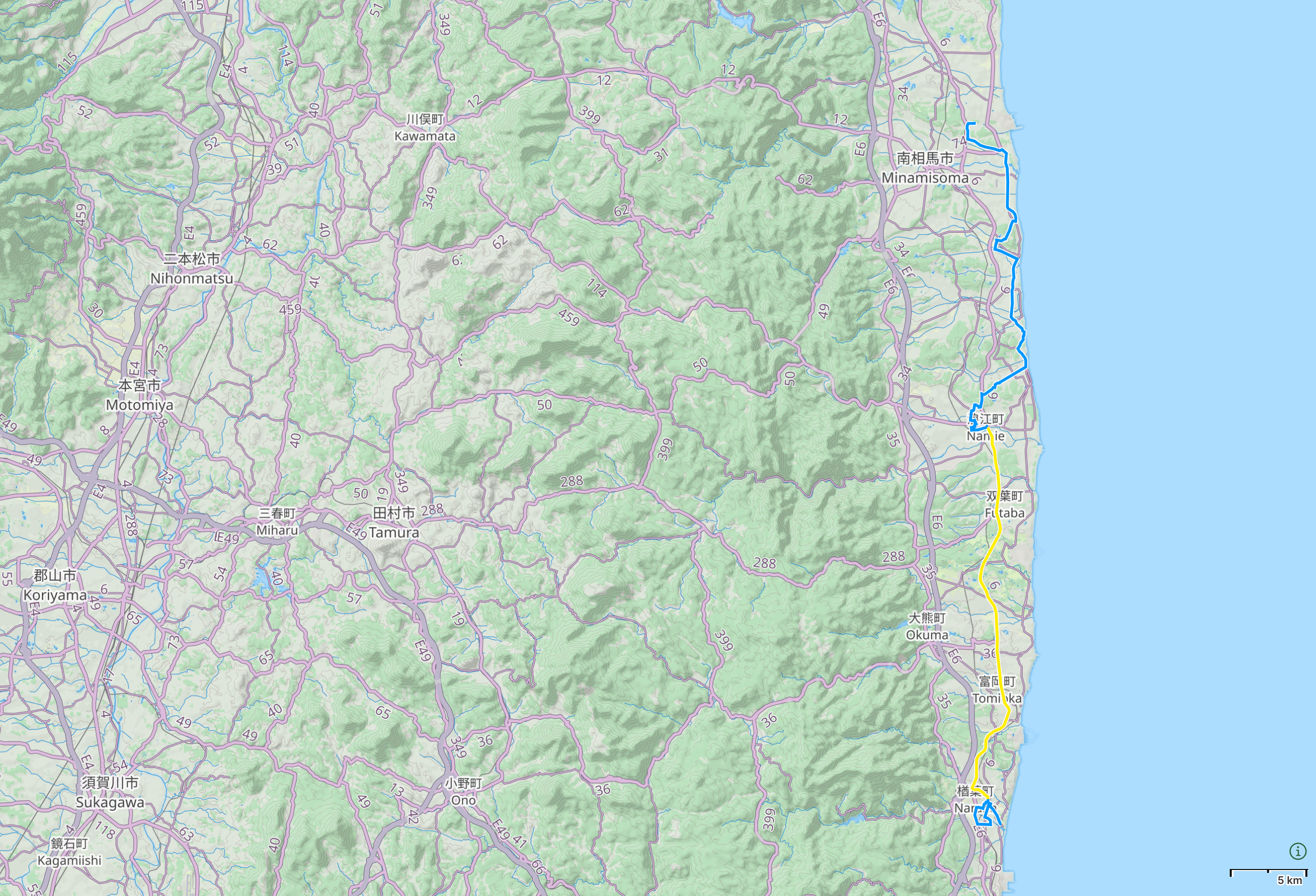
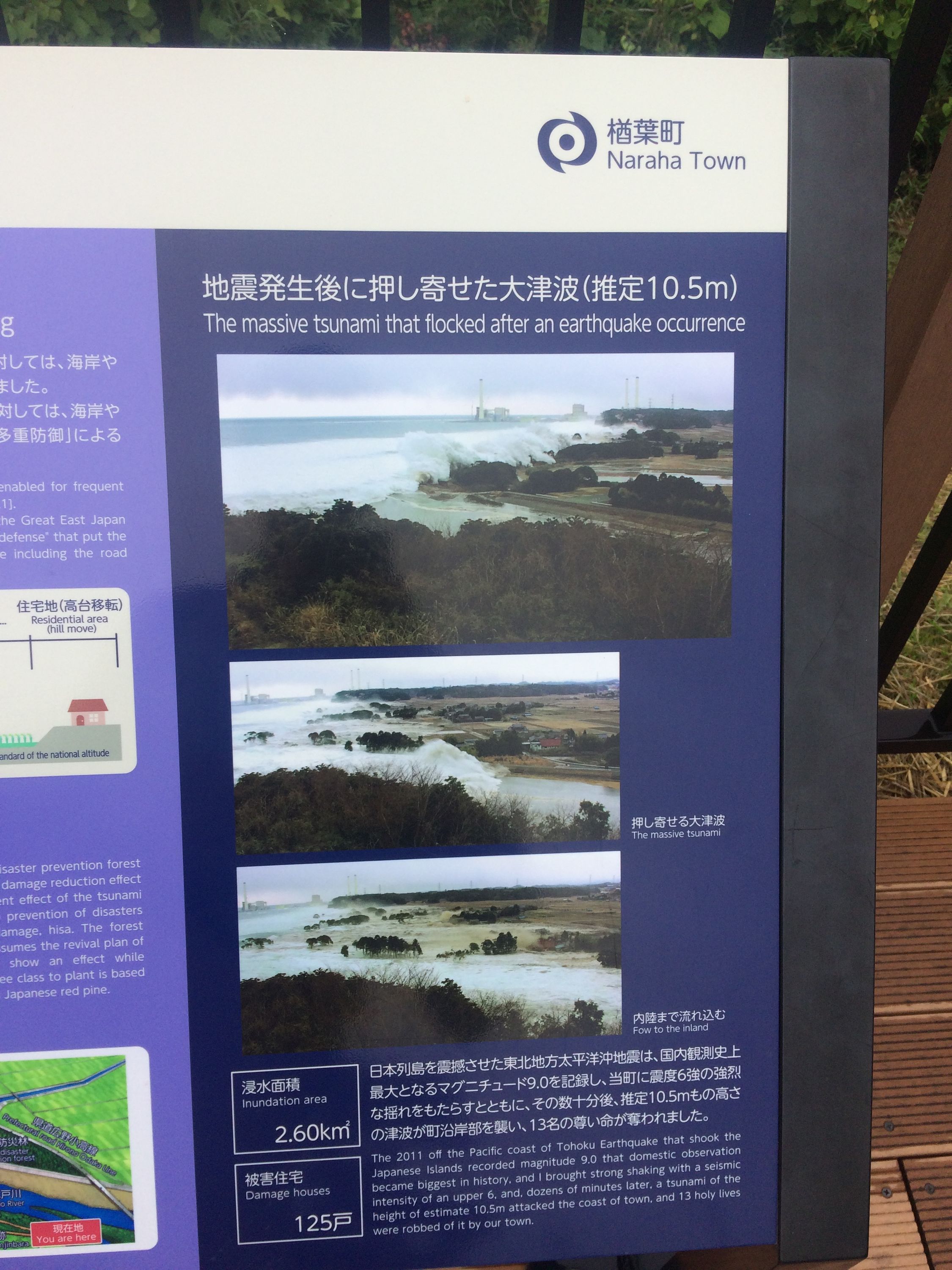
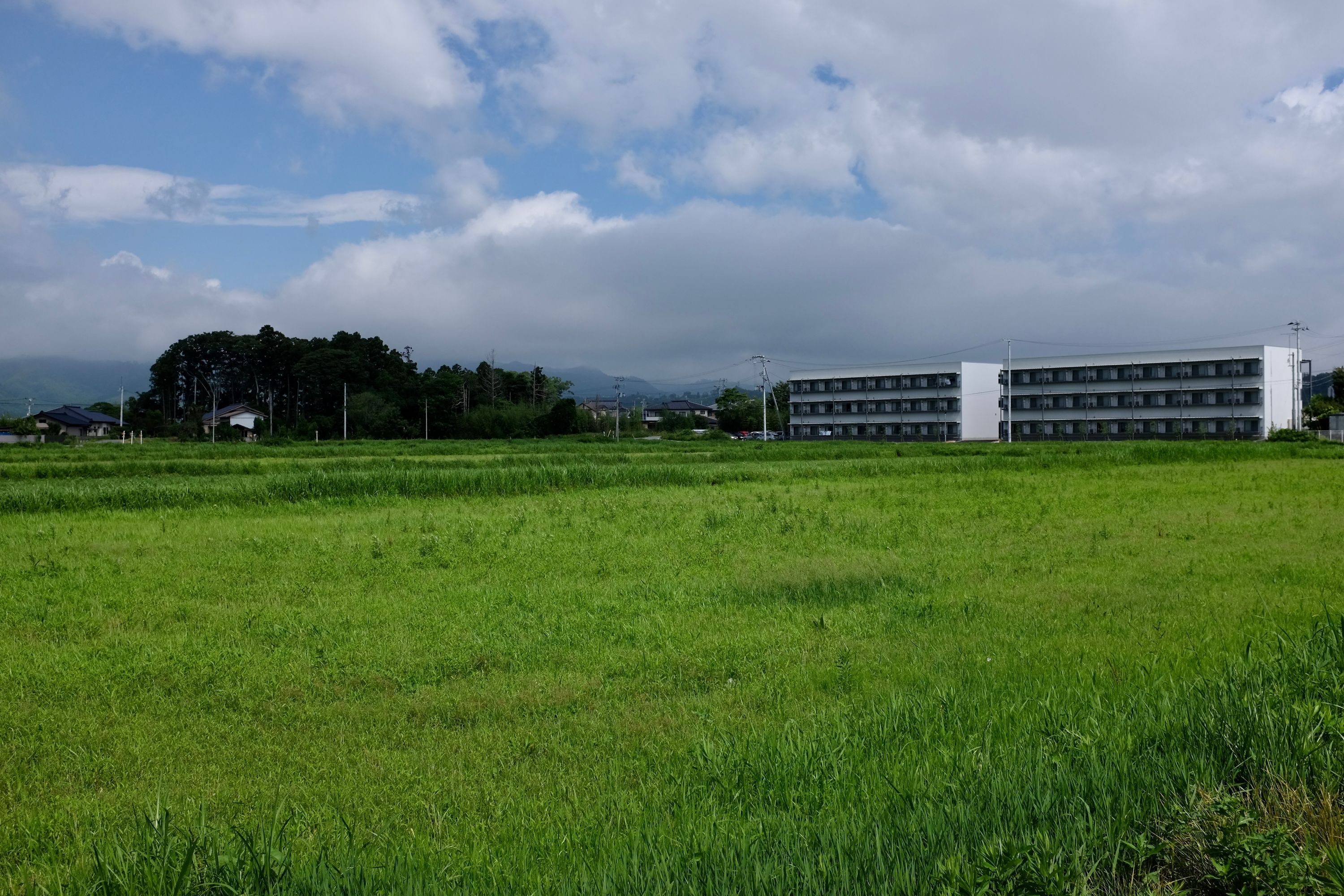
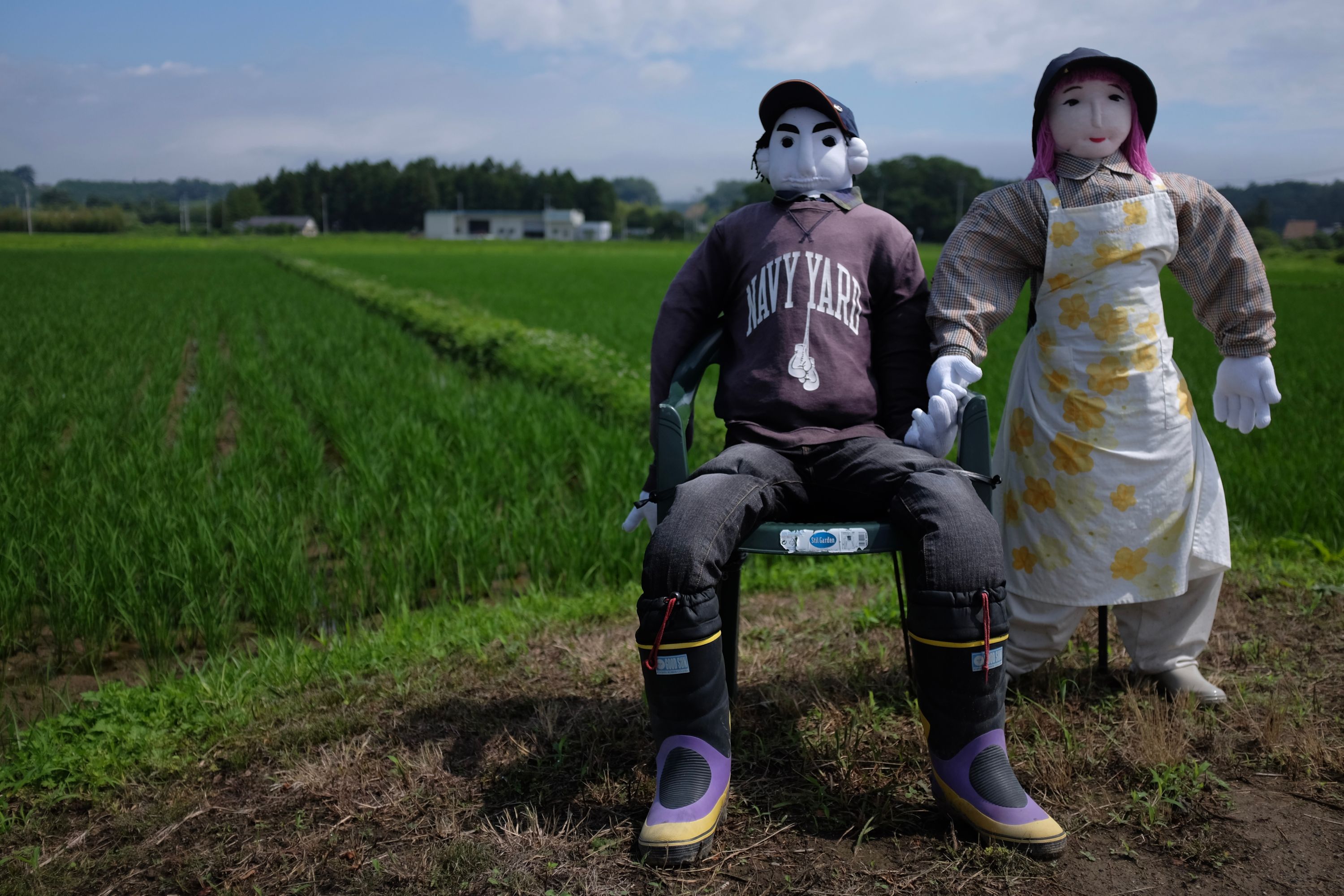
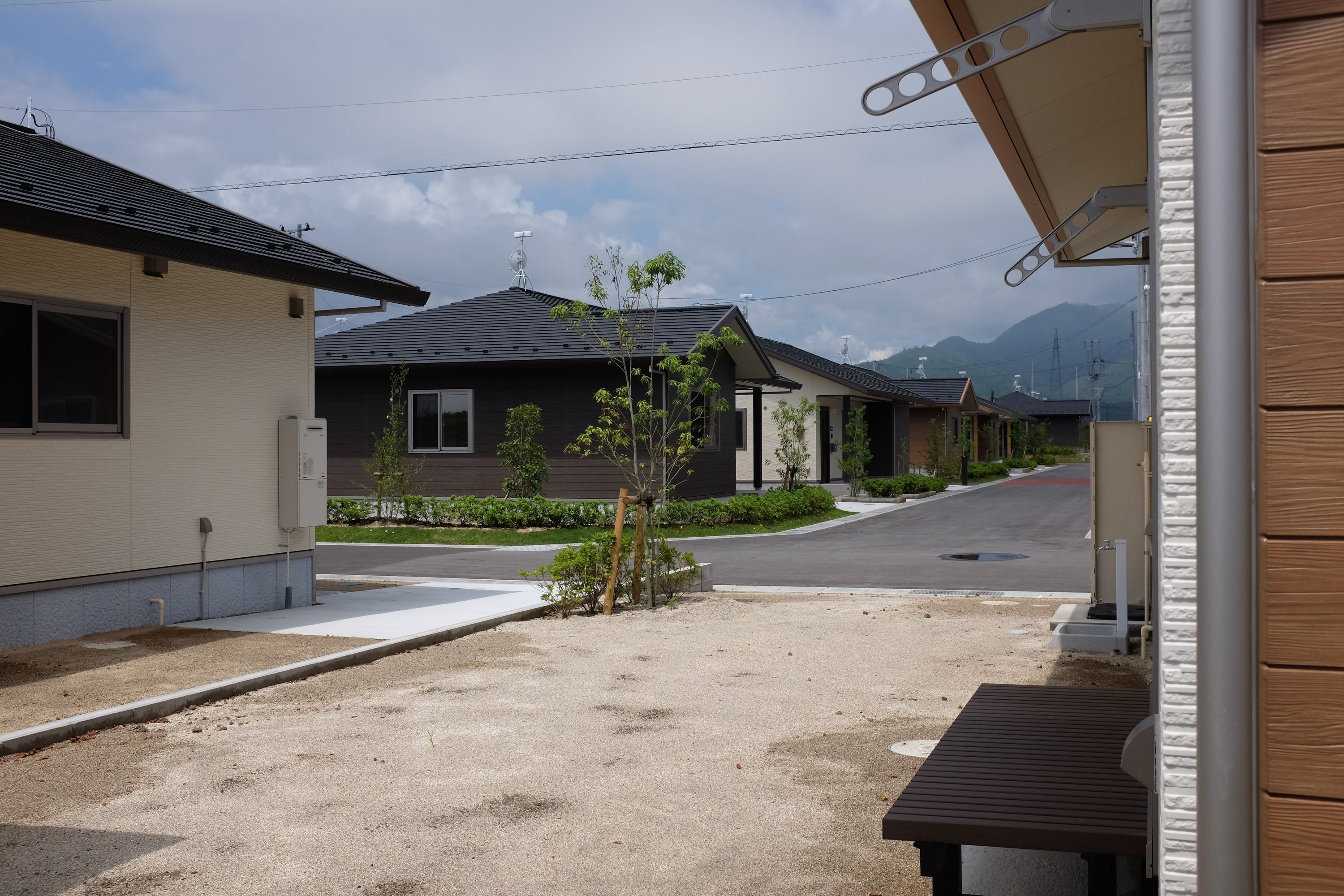
The second wave hit the low-lying areas of Naraha like a white wall, over 10 meters high and an entire ocean behind its face, and what had been houses are now rice paddies, watched over by a doll couple in the style of Ayano Tsukimi, or perhaps made by herself, an echo of distant Tokushima. The town was evacuated until September 2015, and the brave displays of normality — a lovely bathhouse, a beautiful shrine, a memorial park — cannot paper over the fact that Naraha is a rump town, its only grocery store an empty warehouse, its only 7-Eleven an abandoned shell. Under a fierce sun, Route 6 rumbled into the nuclear exclusion zone, and I followed, past a brand-new and completely empty housing development.
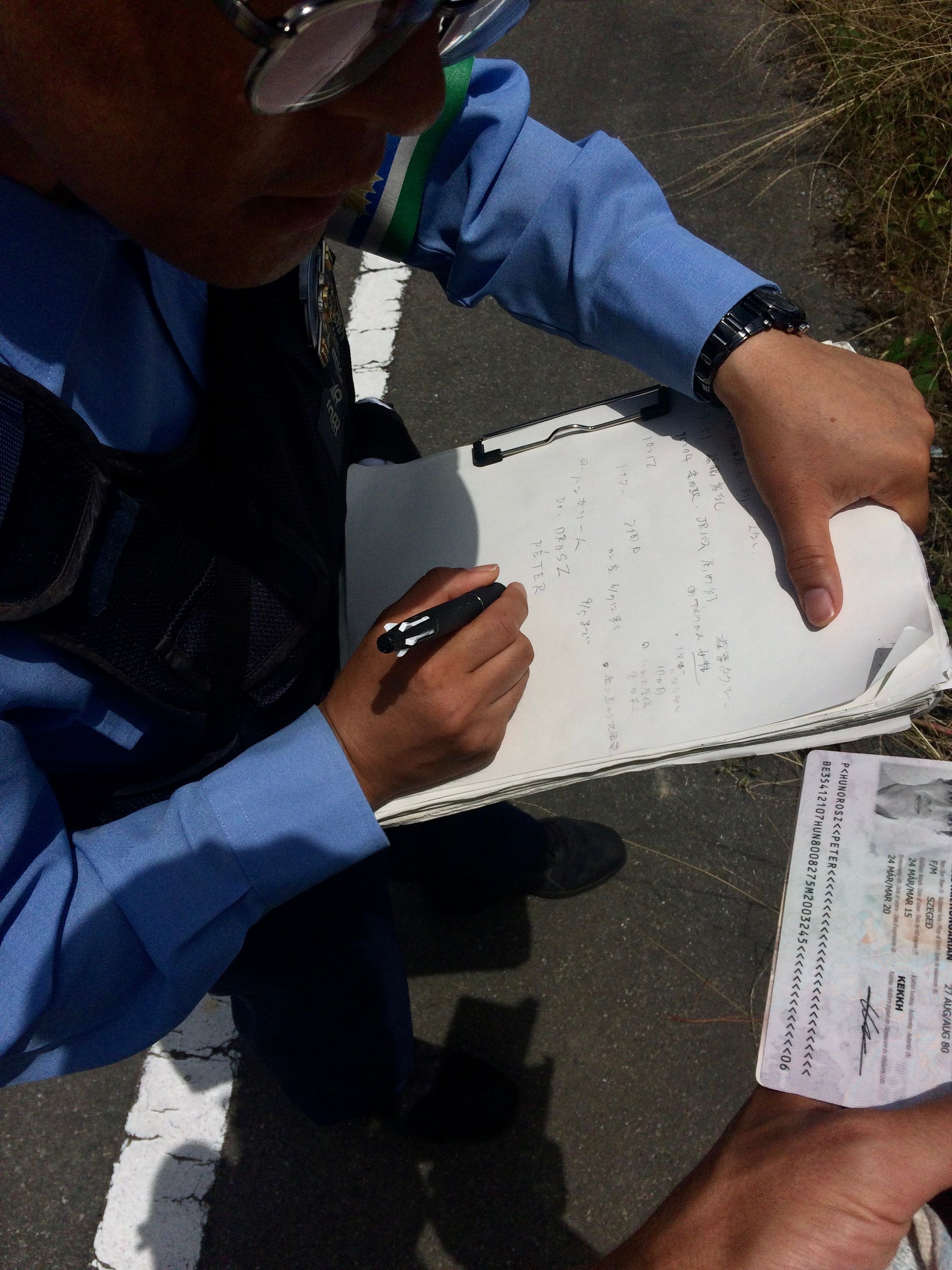
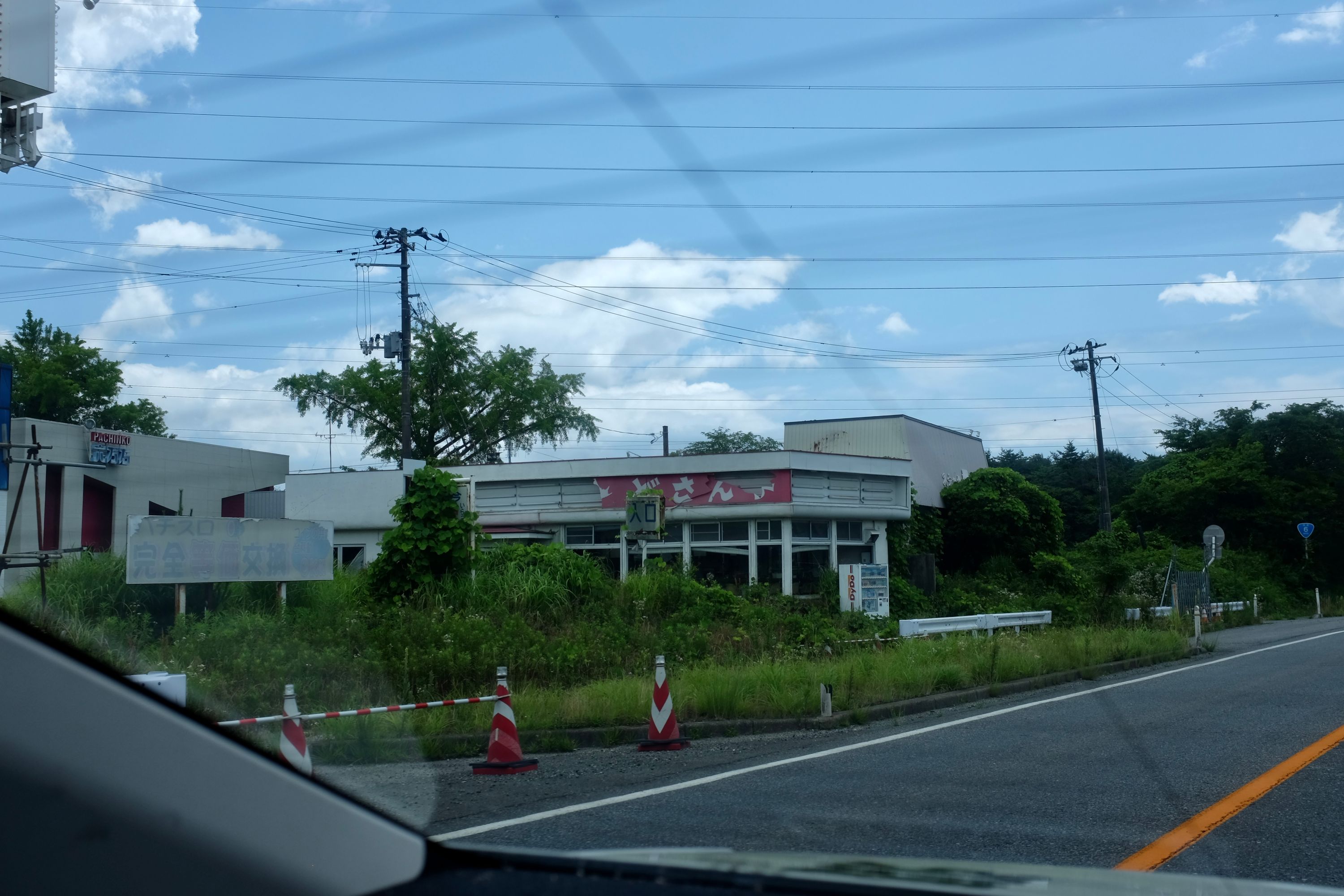
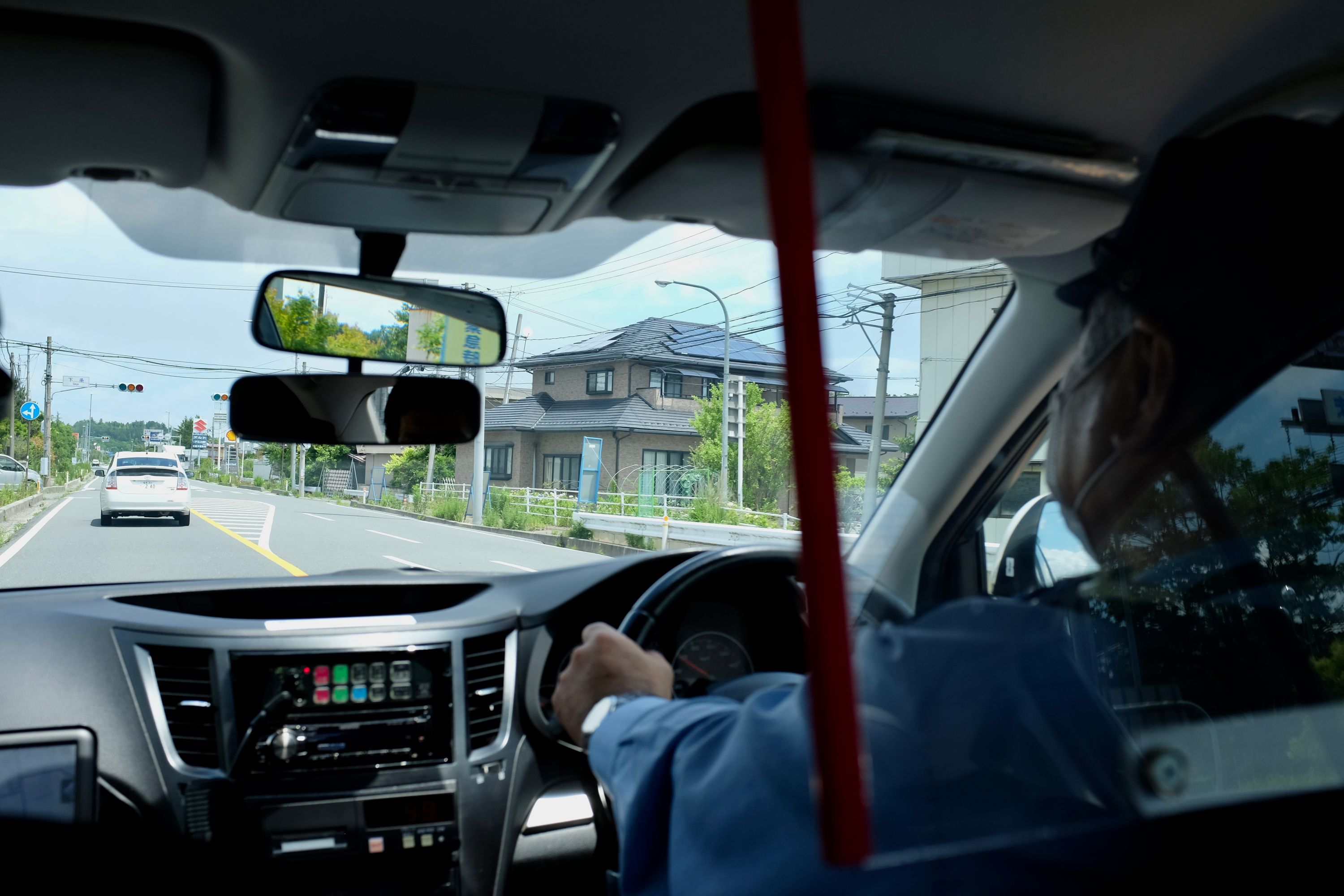

“This is how far you can walk,” the policeman said. We stood in the sun at Tatsuta Station, he and his partner. They wore dosimeters clipped to their uniforms. “You’ll have to take the bus,” he said. I told them I wanted to see Japan, and I showed him my maps and my passport, and he understood. “You can continue your walk from Minamisōma,” he said. His map of the nuclear exclusion zone showed otherwise. “Well, yes, actually you can walk from Namie,” he said. There was no bus. “We will be the bus,” he said. I got in the back, and we drove on to Route 6, open since September 2014 to vehicular traffic. It looked normal enough. There were even convenience stores, unlike in Naraha. Then we crossed into Tomioka, where the waste land began. “The radiation is very heavy here,” he said. Outside, in the summer sun, small-town Japan lay in the ruins of the earthquake and six years of abandonment. The gates of businesses and private homes were barricaded. Police cars stood at checkpoints. We drove across Ōkuma, we drove into Futaba, names from the news, a Subaru showroom in the weeds. We drove by the Fukushima Daiichi reactor, power lines tracing across the summer sky. A woman watered flowers at a gas station, absurdly out of place. Fear in a handful of dust. At Namie, I got out, and they drove away.
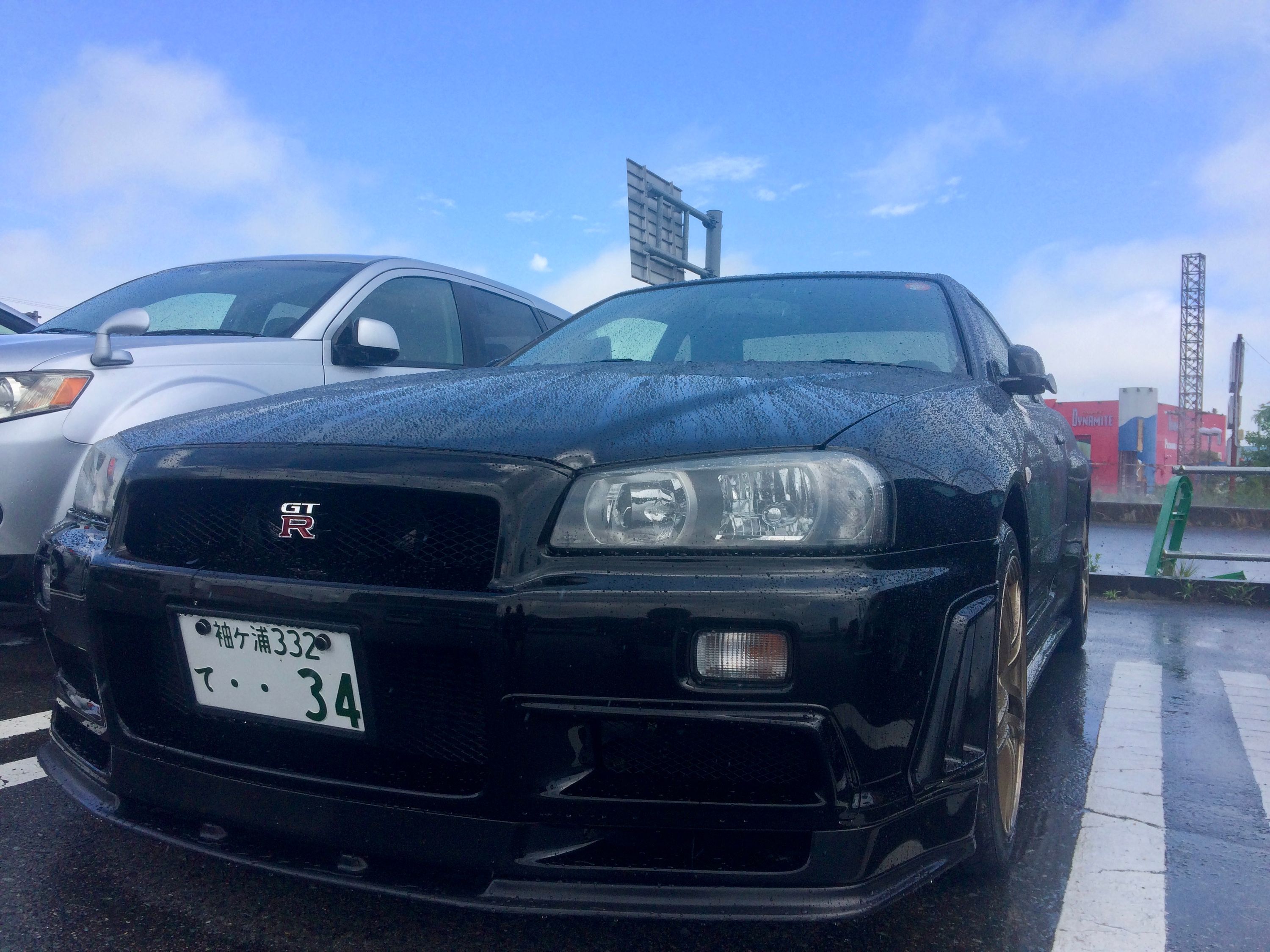
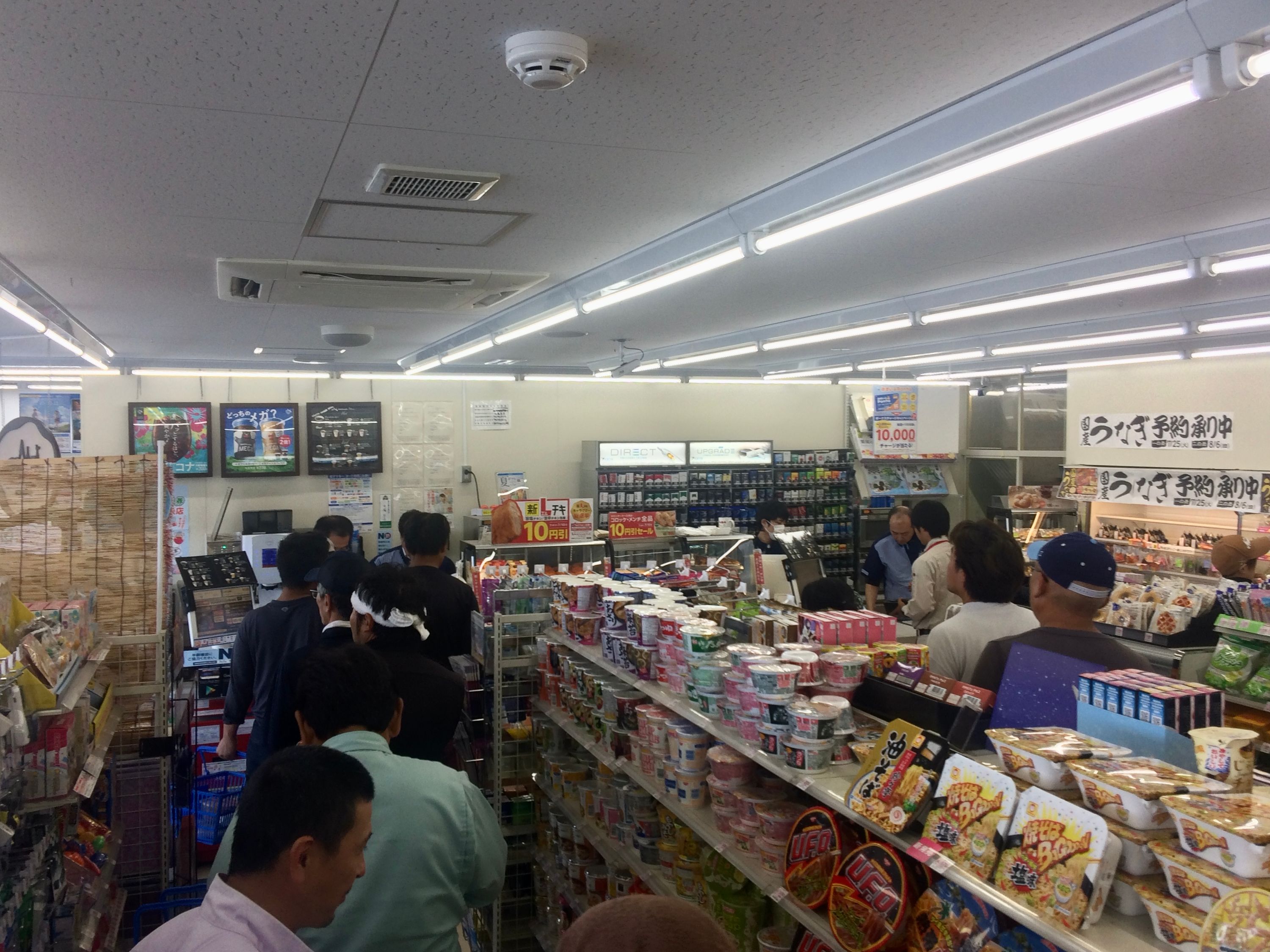

Showers from a clear blue sky hit the parking lot of the convenience store, drenching the trucks and the Skylines of the cleanup crews, who stood mesmerized, box lunches in hand, the asphalt steaming. The lines stretched all the way to the beer coolers, the evening of a summer festival, but there were no fireworks now, only a store which was the only business in a dead town, its only customers the cleanup crews, and so it closed at 6 PM instead of staying open all night. Lawson was a business, not the government. I drank my coffee and walked into the waste land.
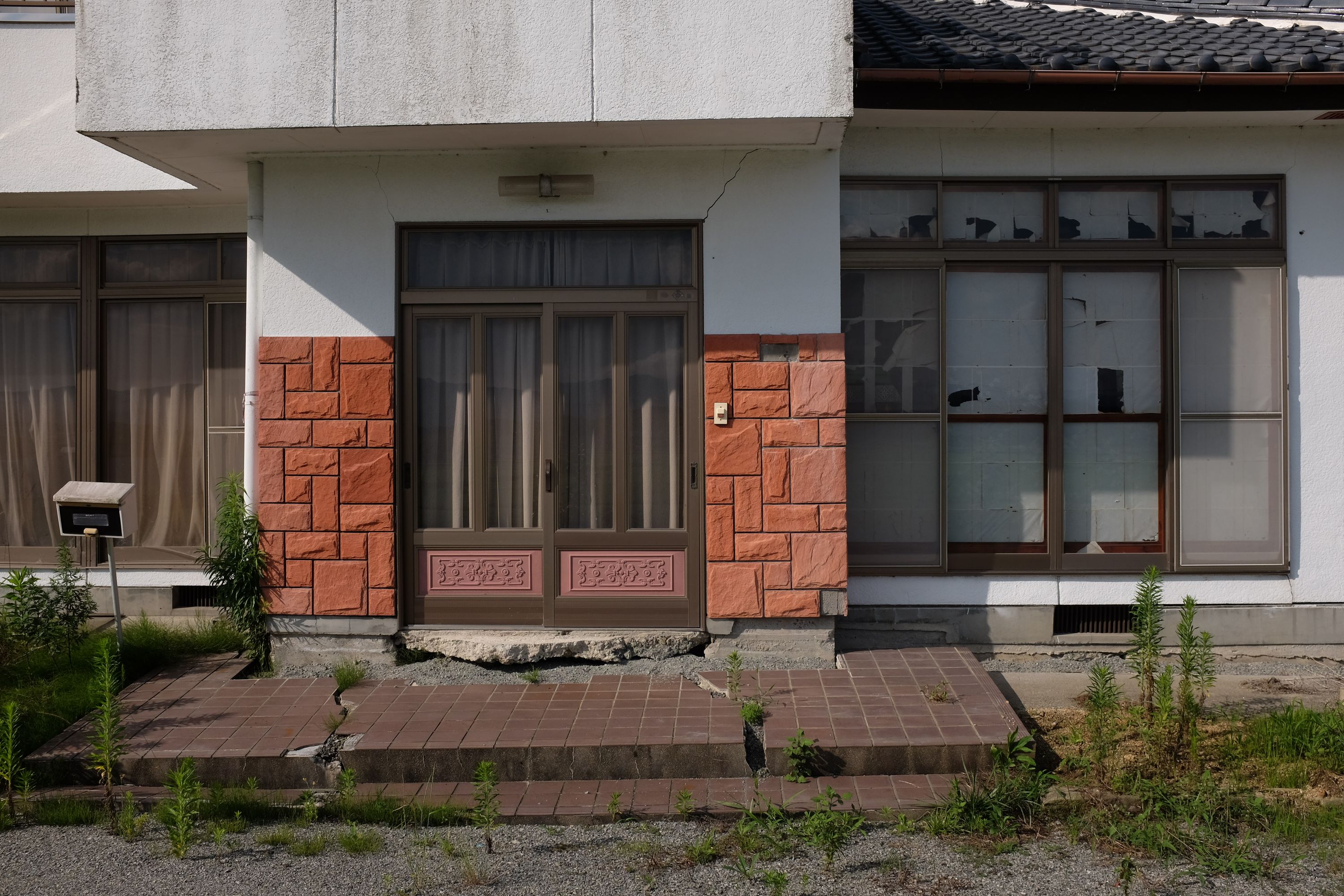
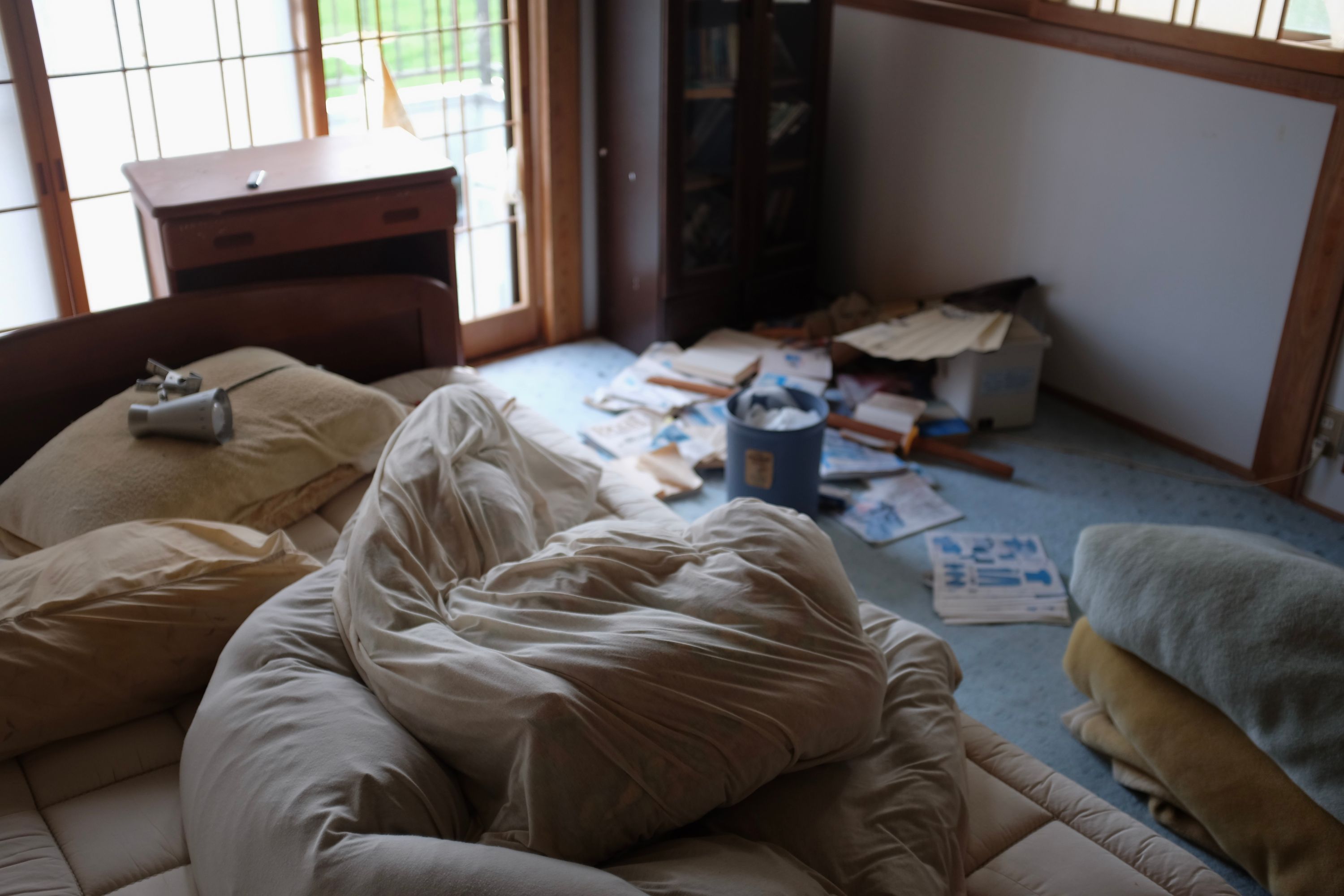
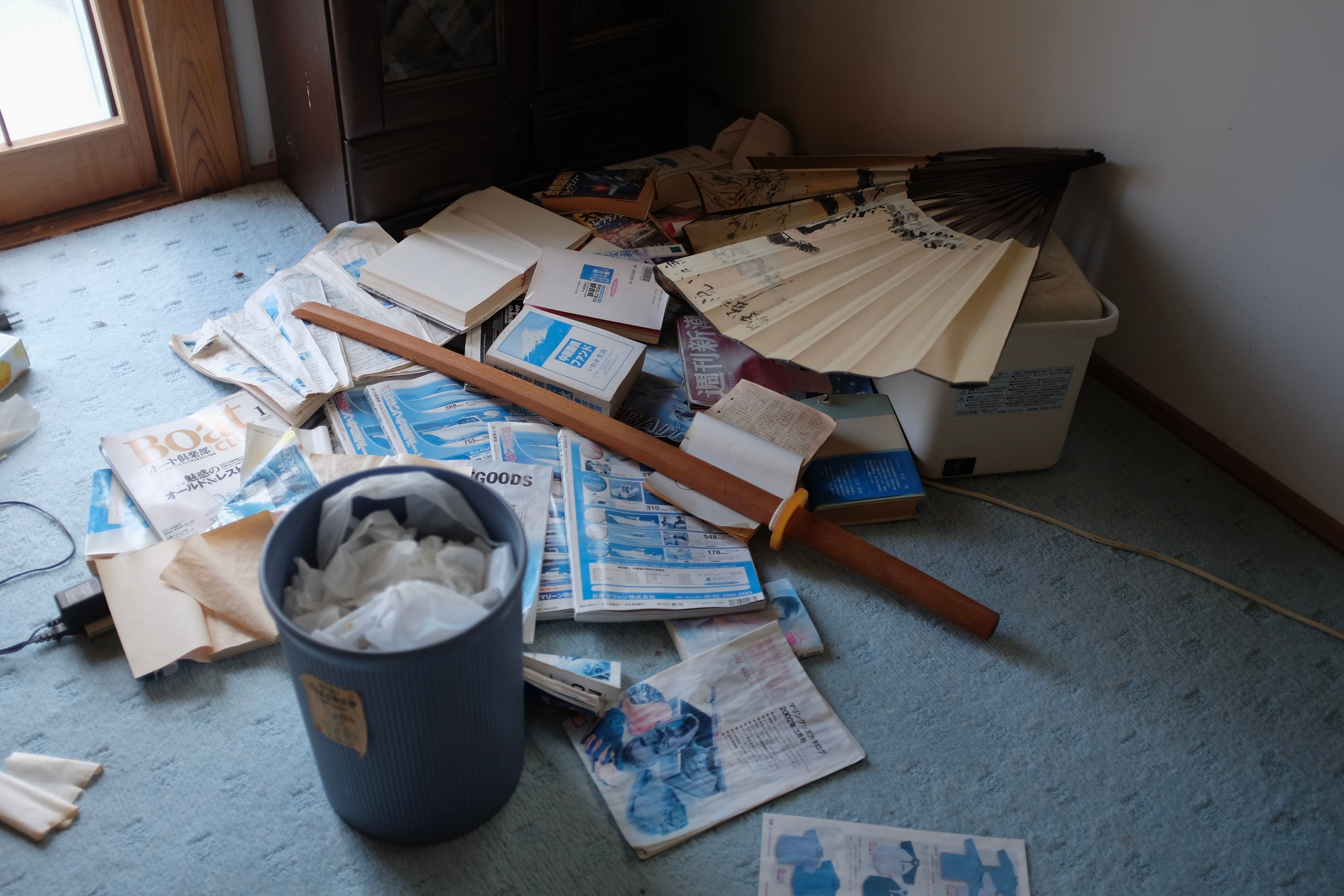
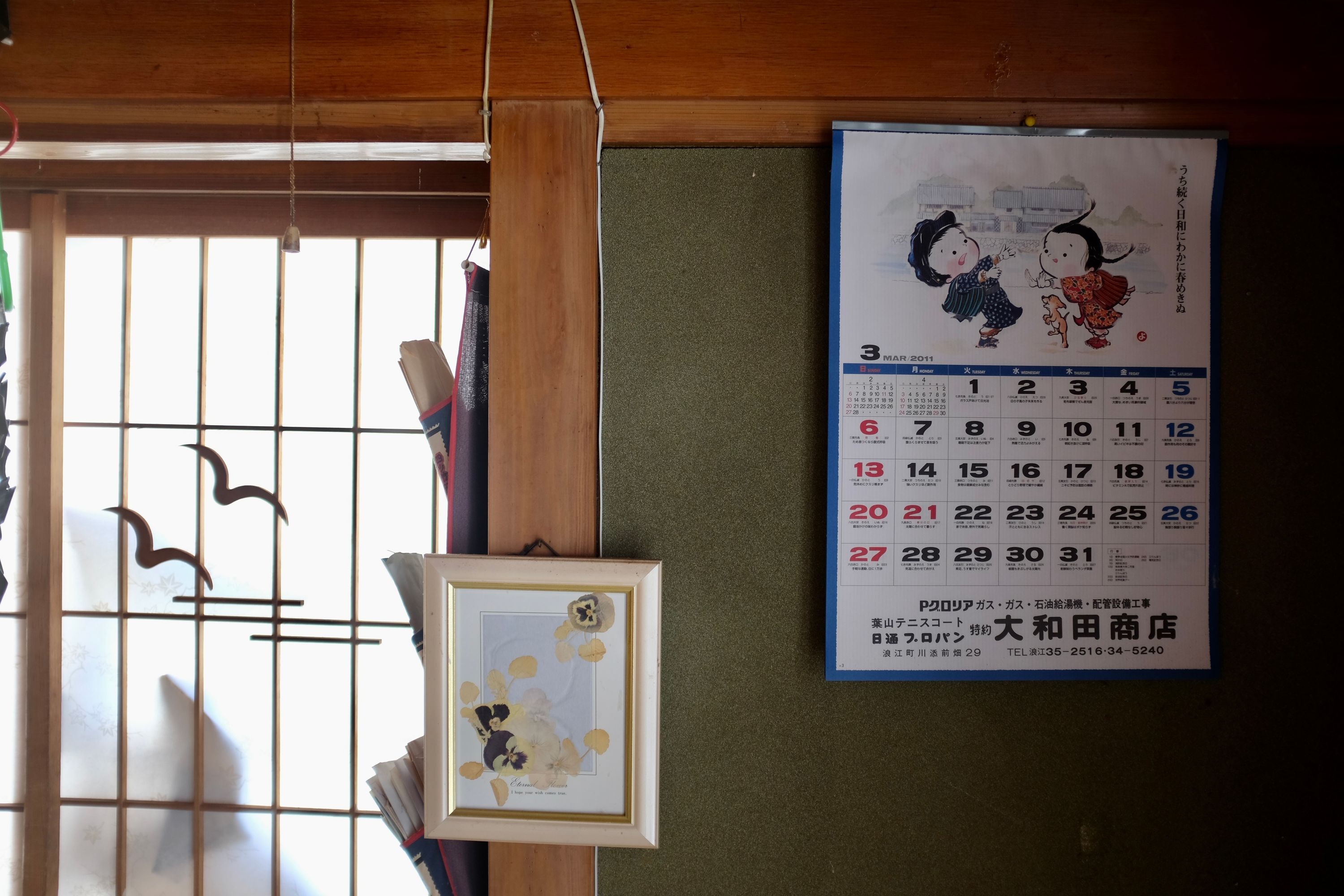
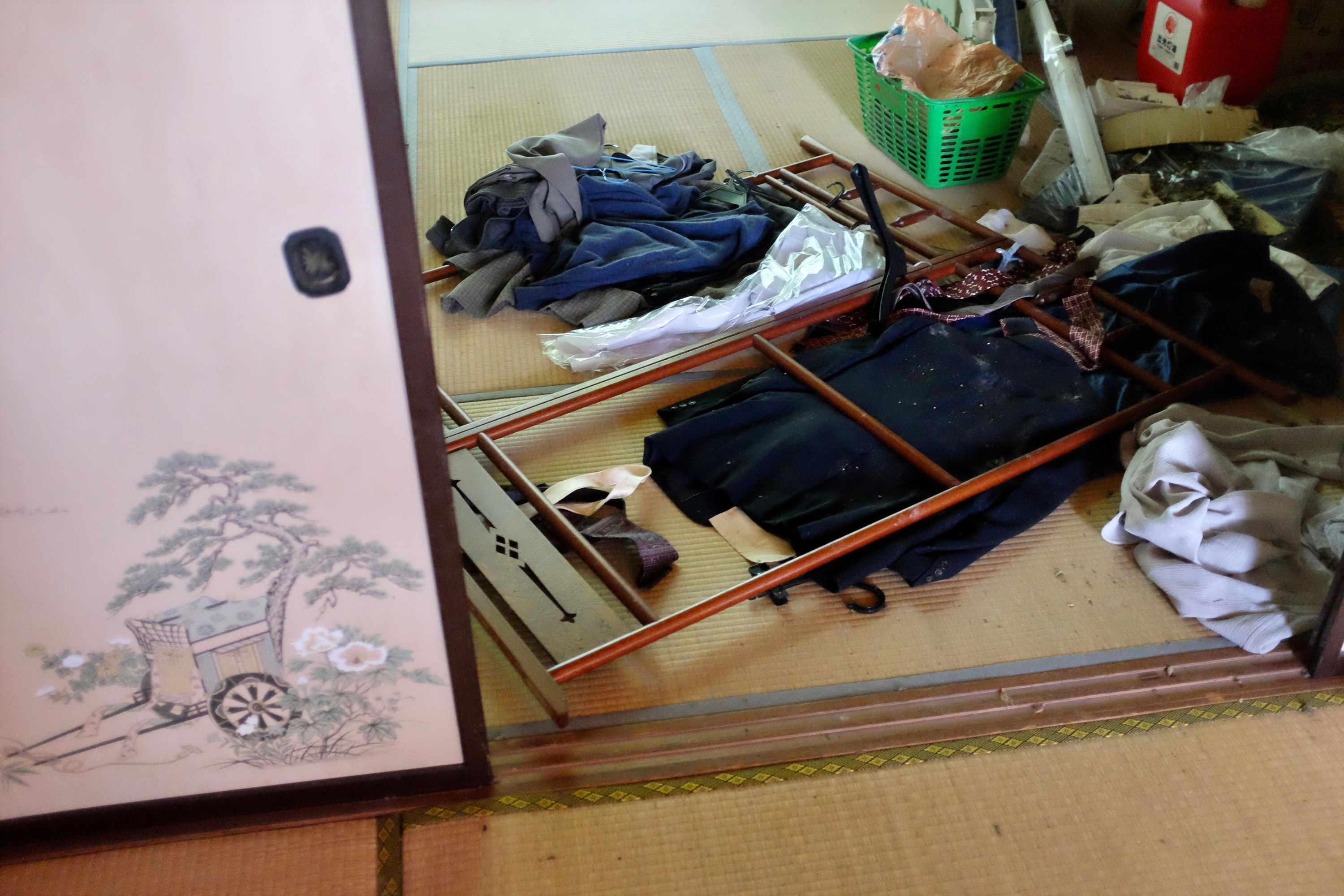
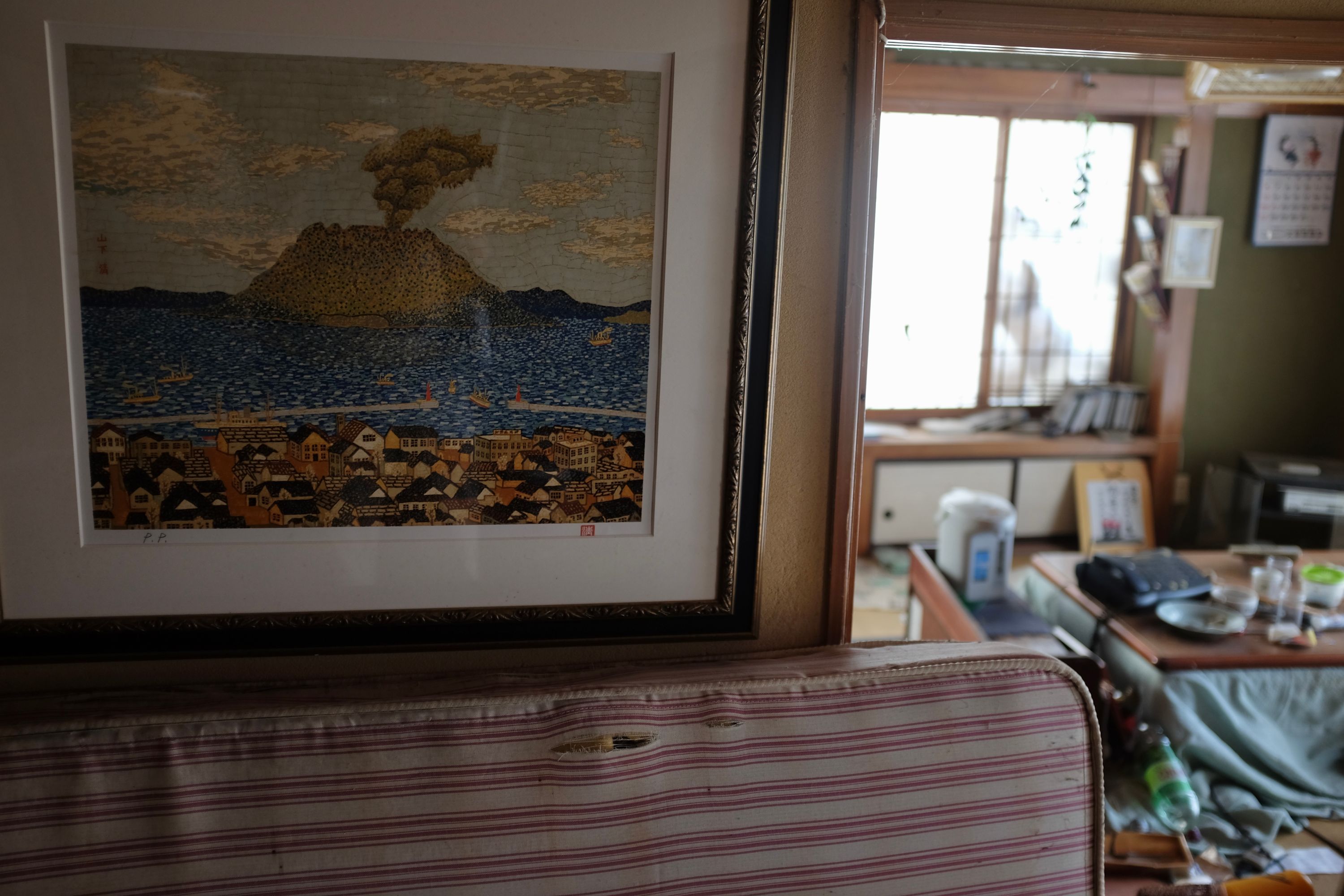
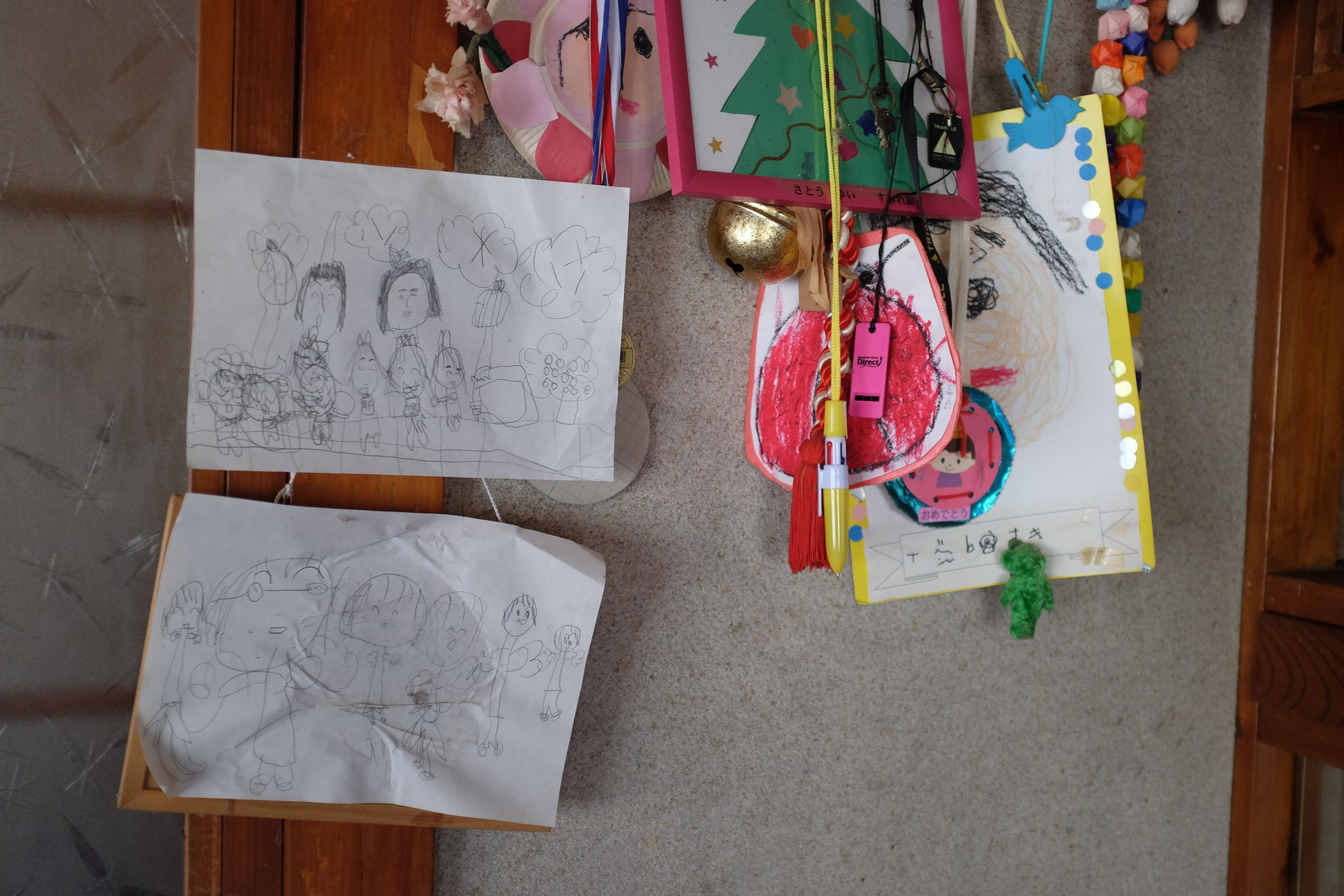
On an abstract level, we all know that the calendars of Pripyat show April 1986, and that the calendars of Namie show March 2011, but an abstract level is one thing, and standing in the hallway of a house, reeling from the moldy, humid air, over books knocked from shelves by the earthquake and never replaced, an unmade bed never to be made again, the abandoned drawings of children who must barely remember this house now, a coat stand thrown all the way across the room, trailing shirts like the coma of a comet, the concrete of the front steps cracked, on the wall a framed picture of Kagoshima, the city I had walked out of on a long-ago April morning to come here, and knowing that April 2011 will never come, is another thing.
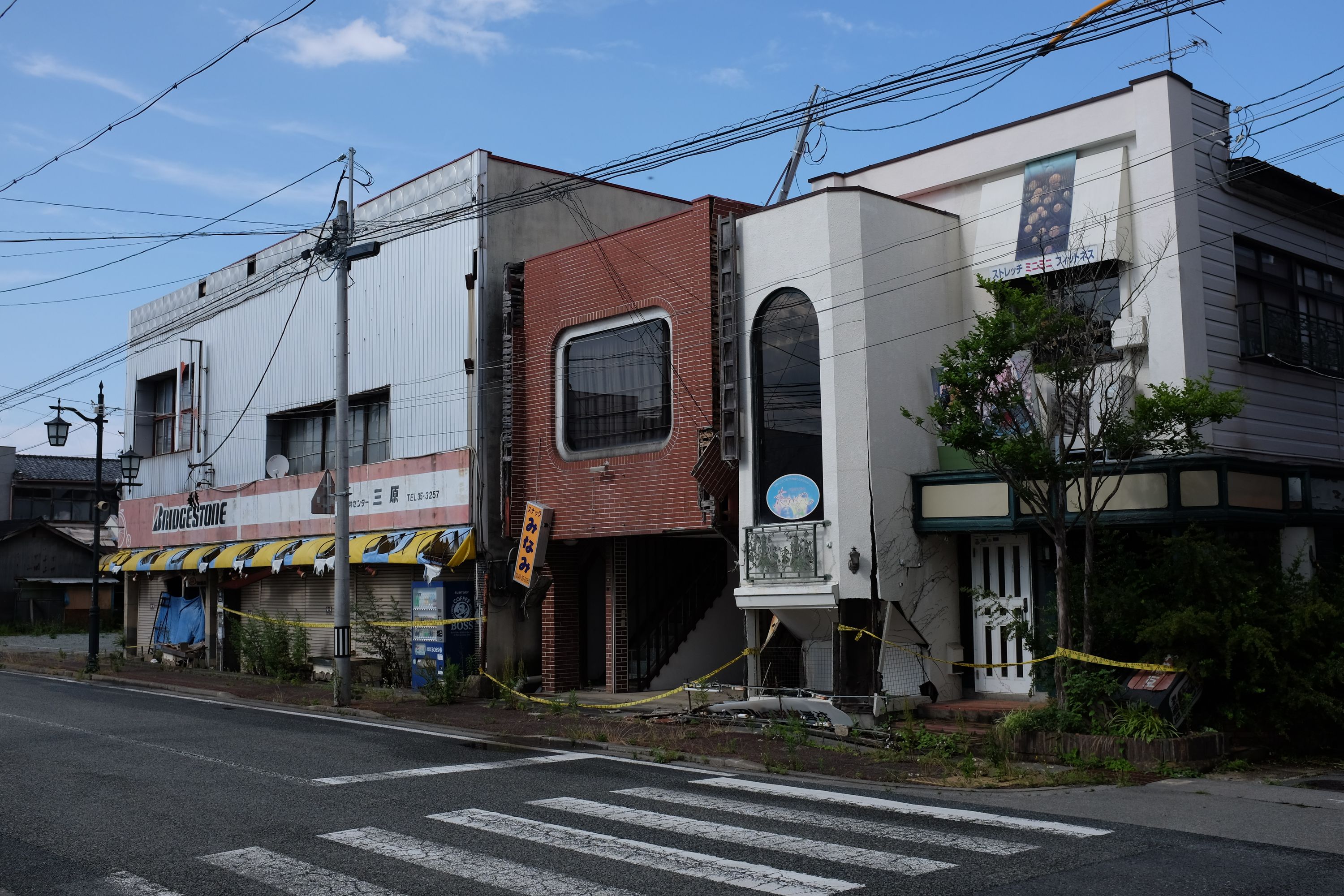
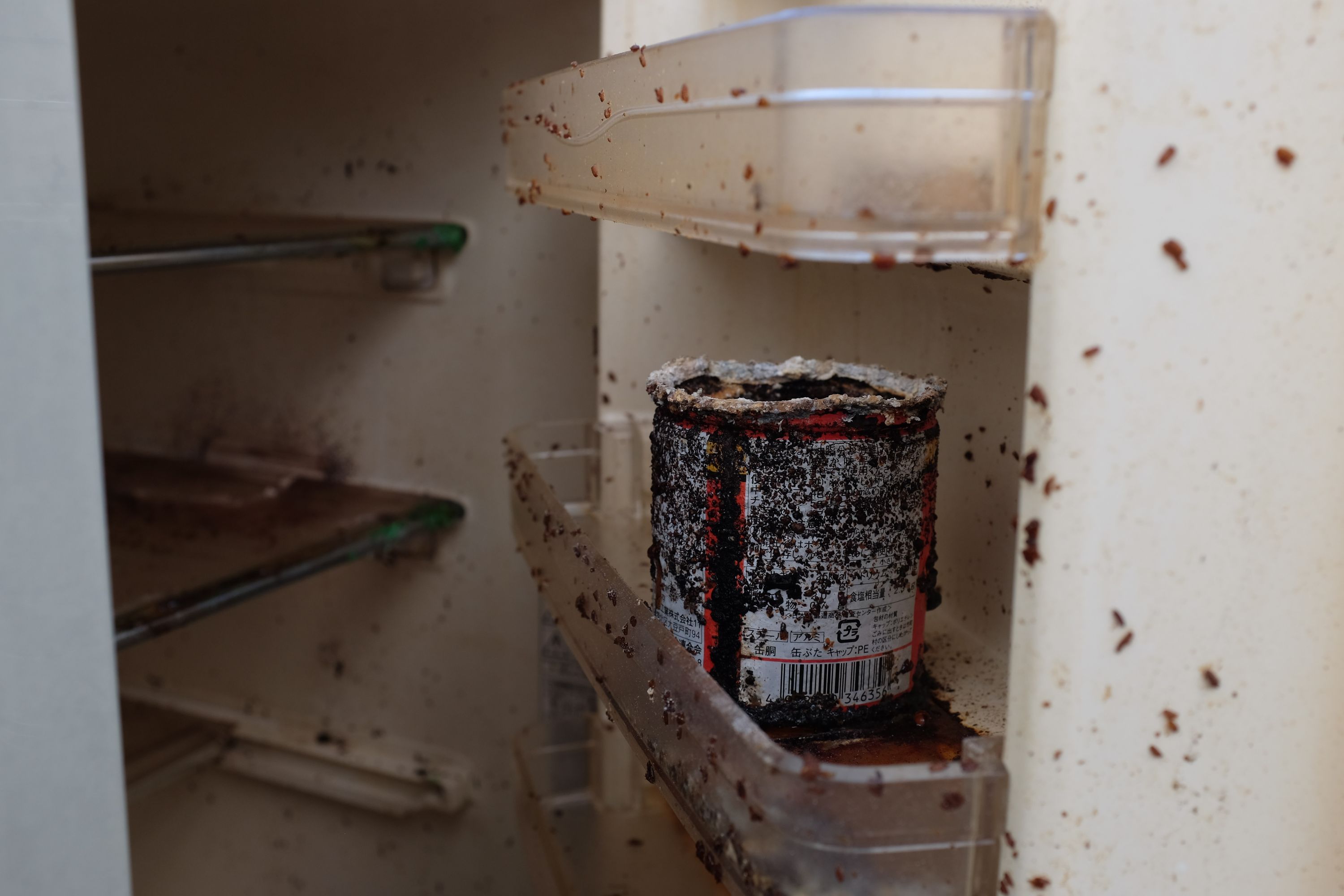
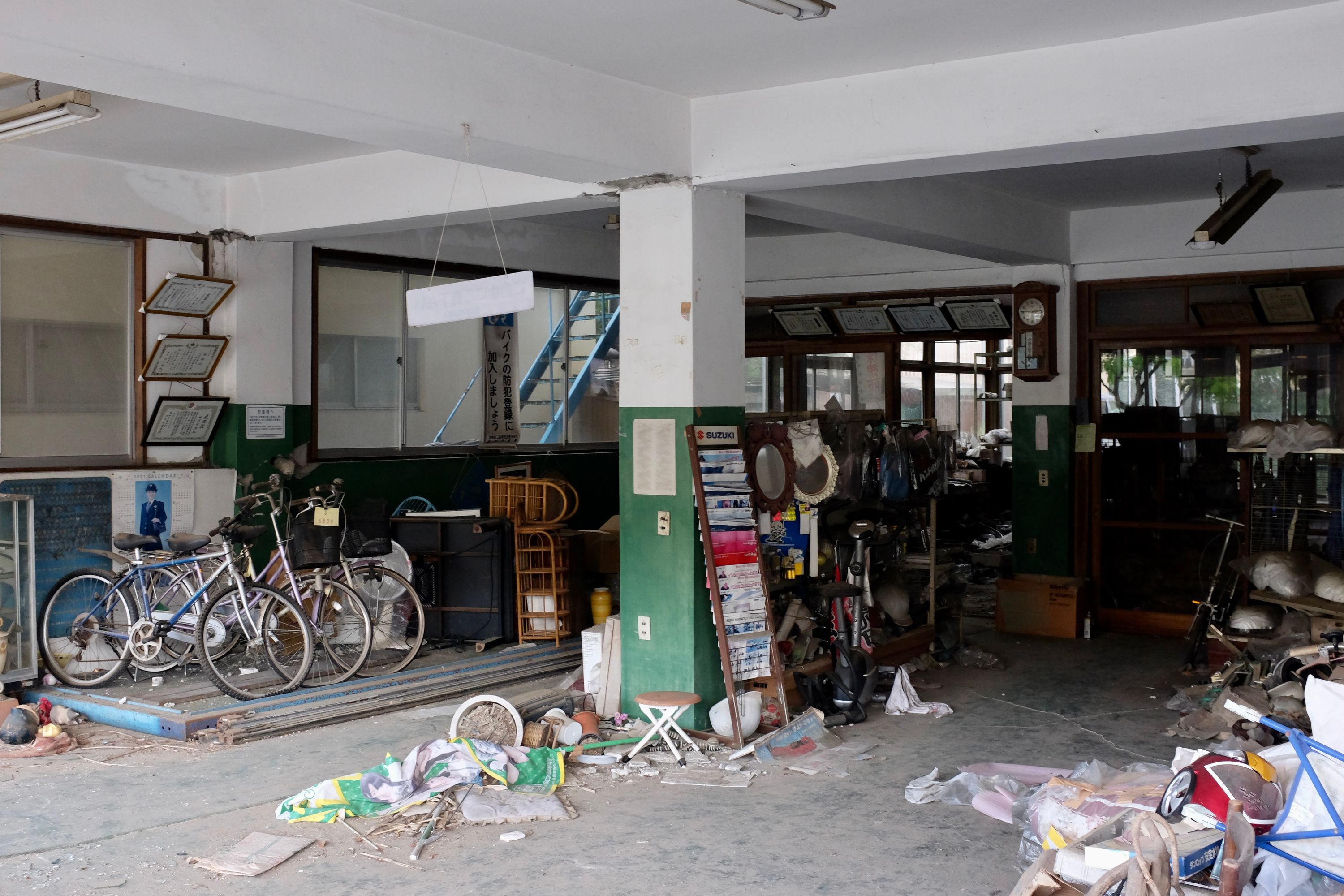
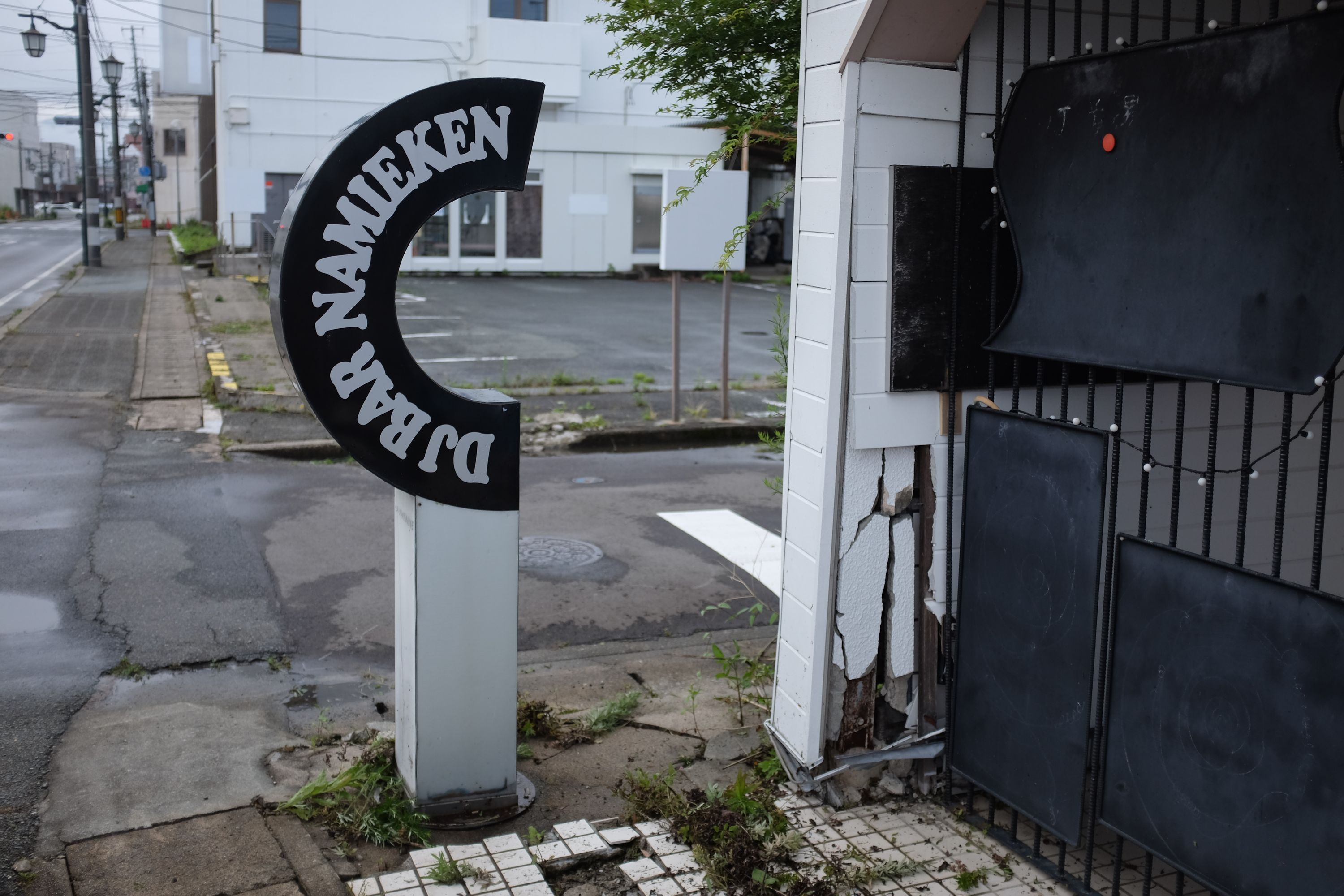
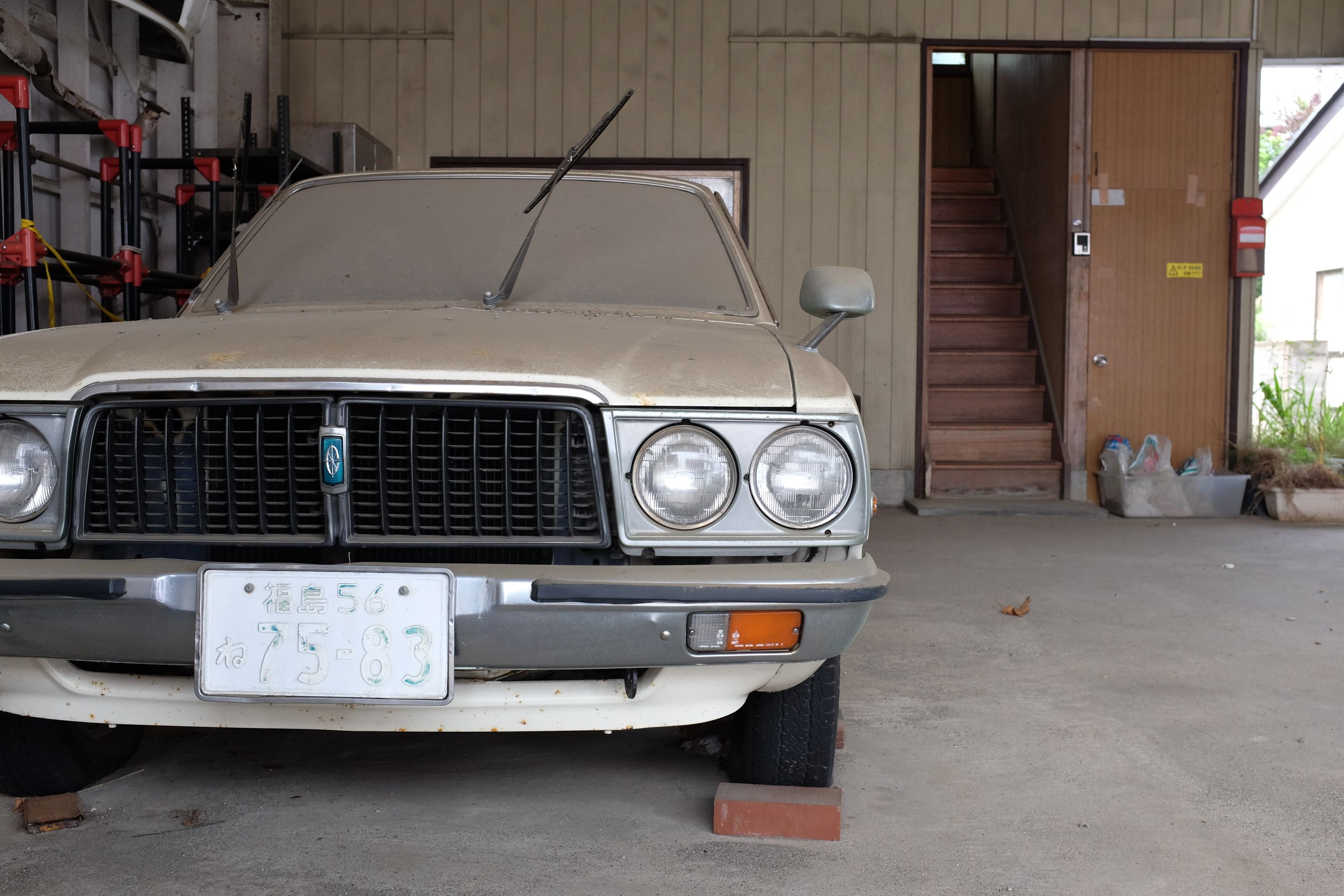


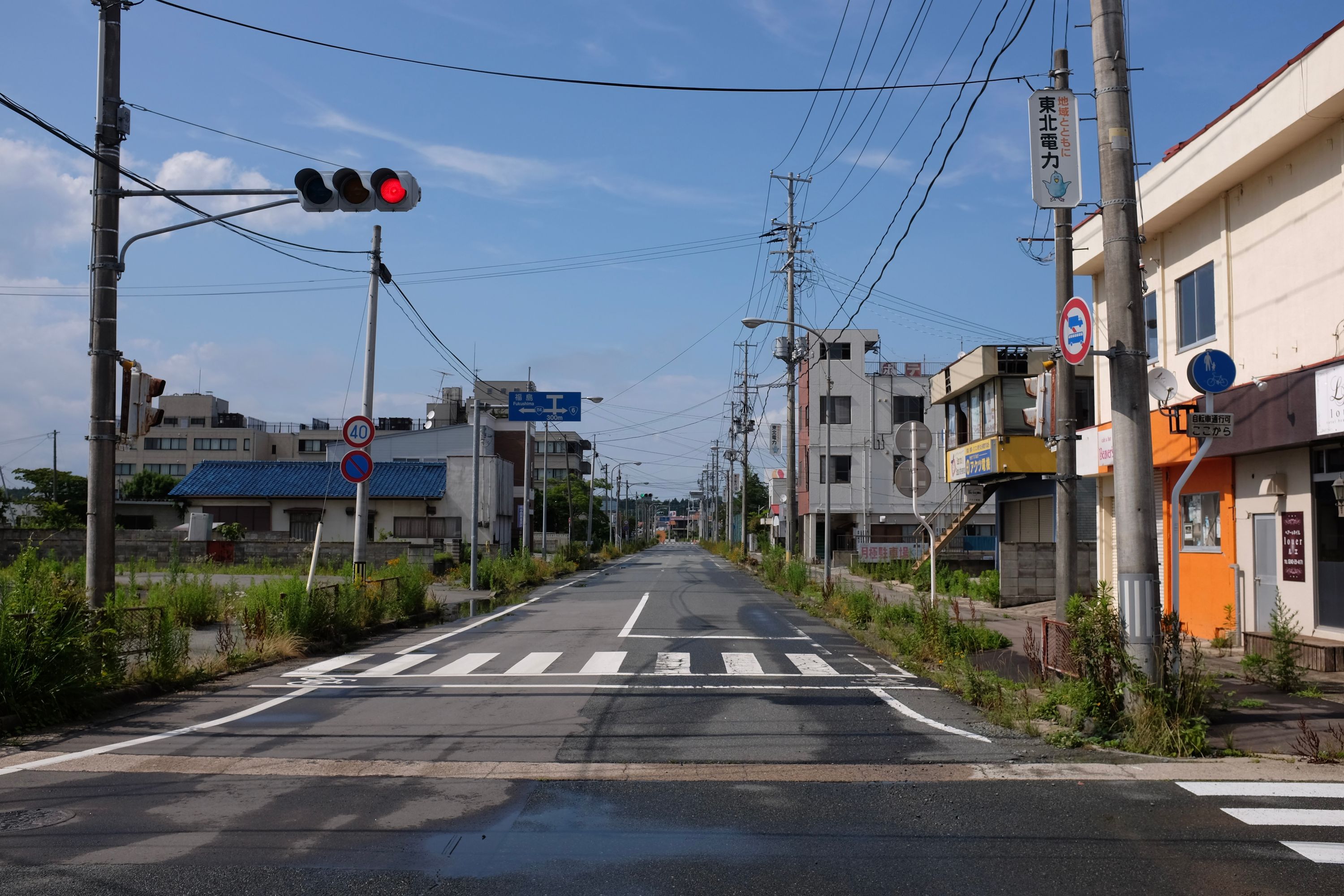

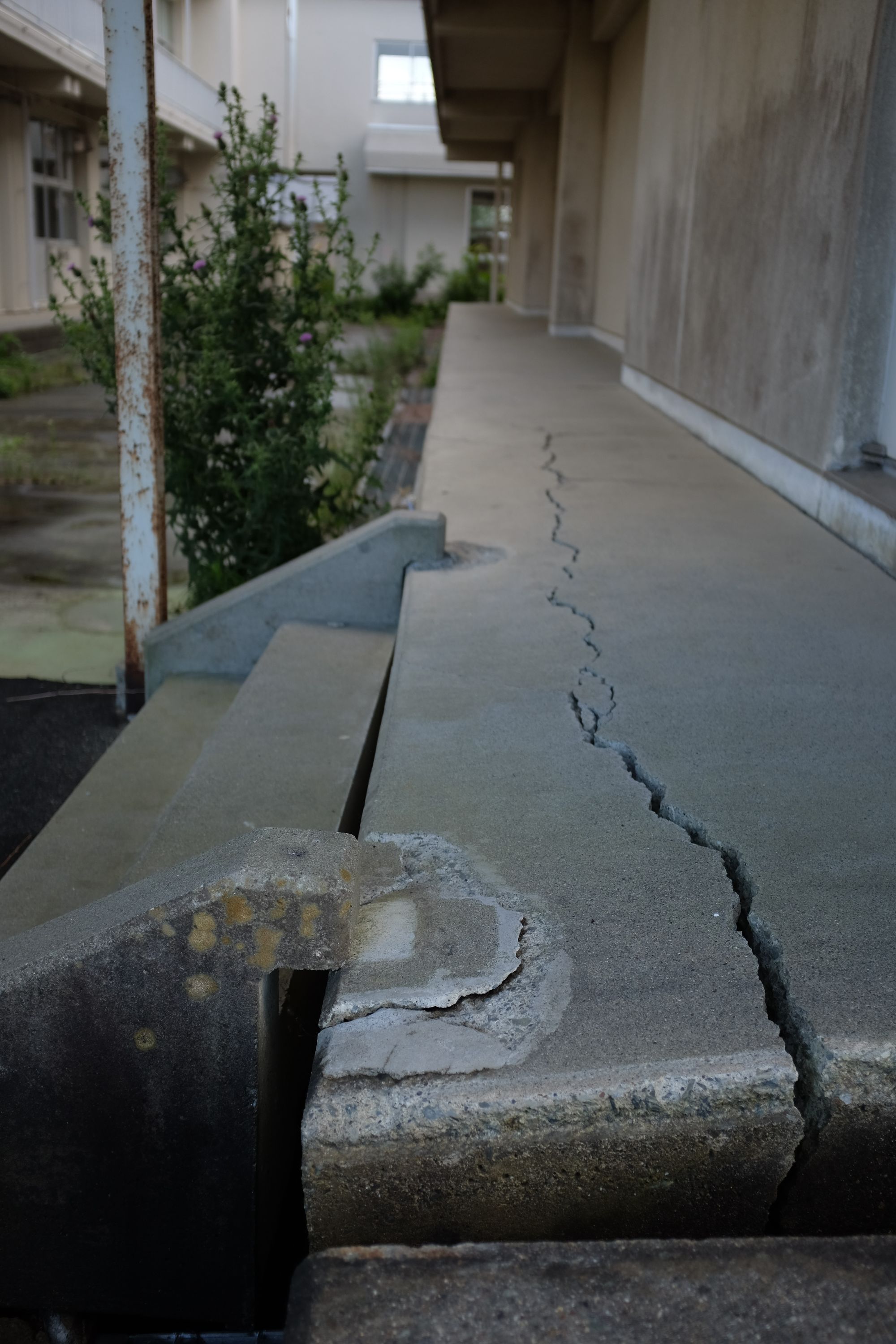


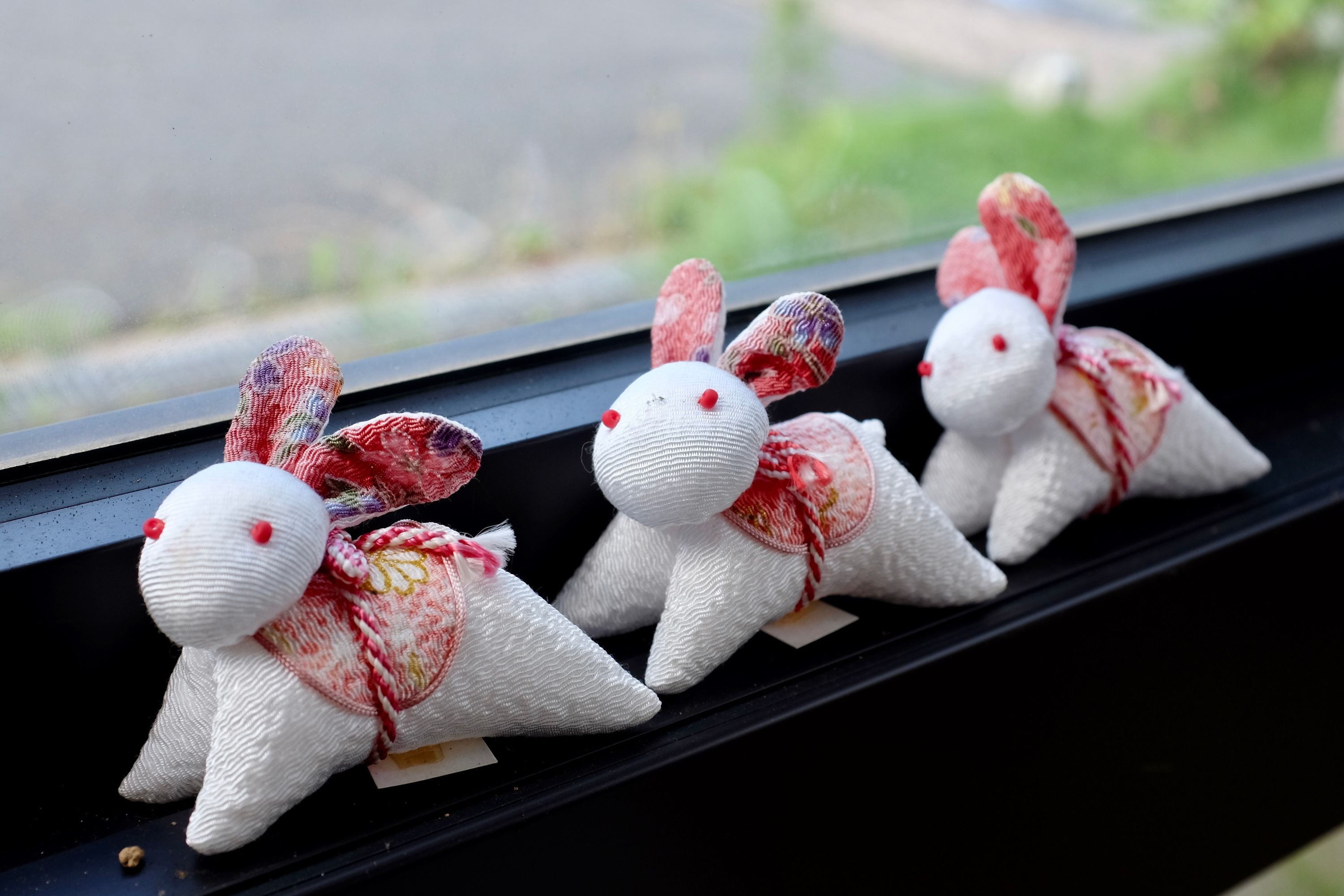

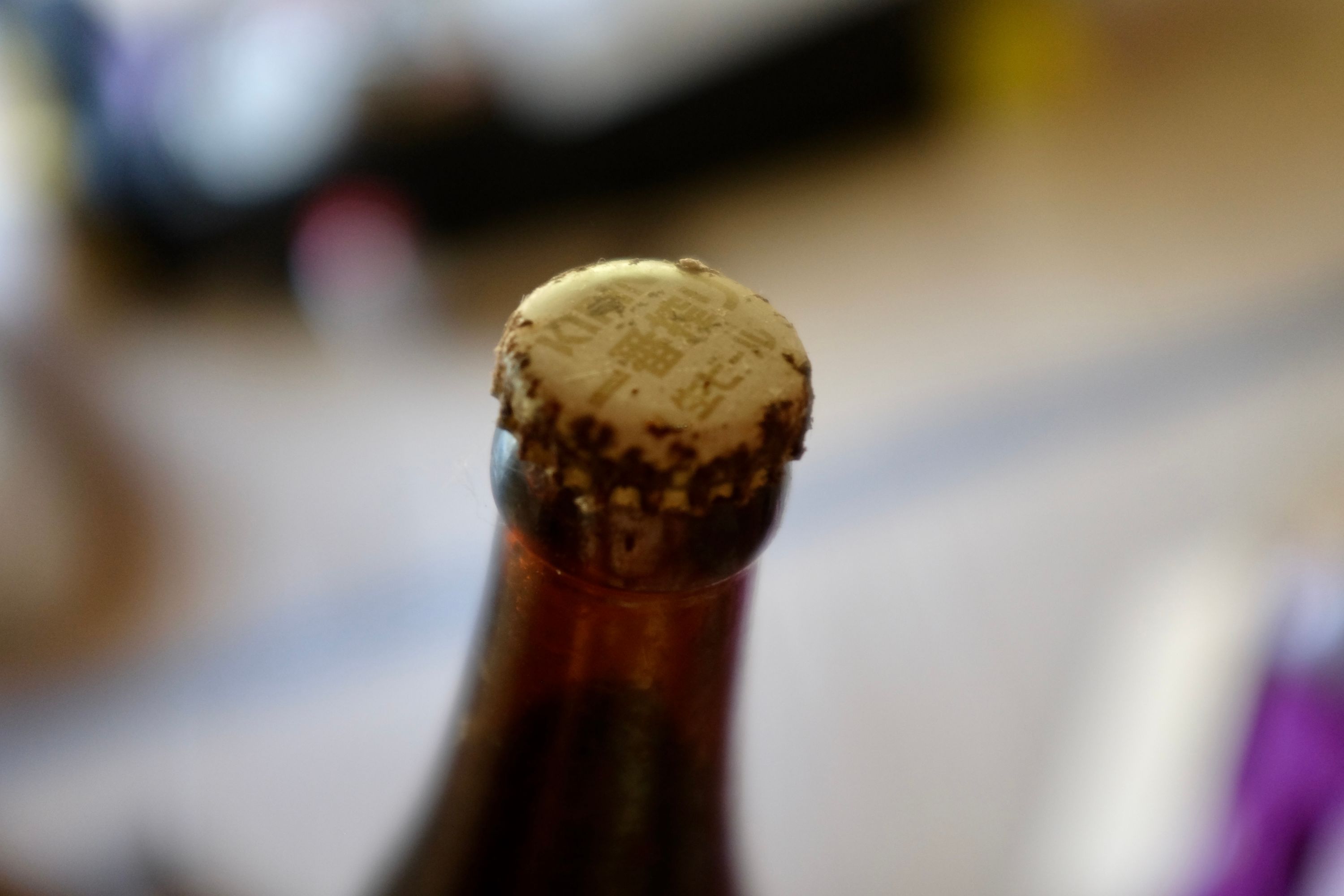
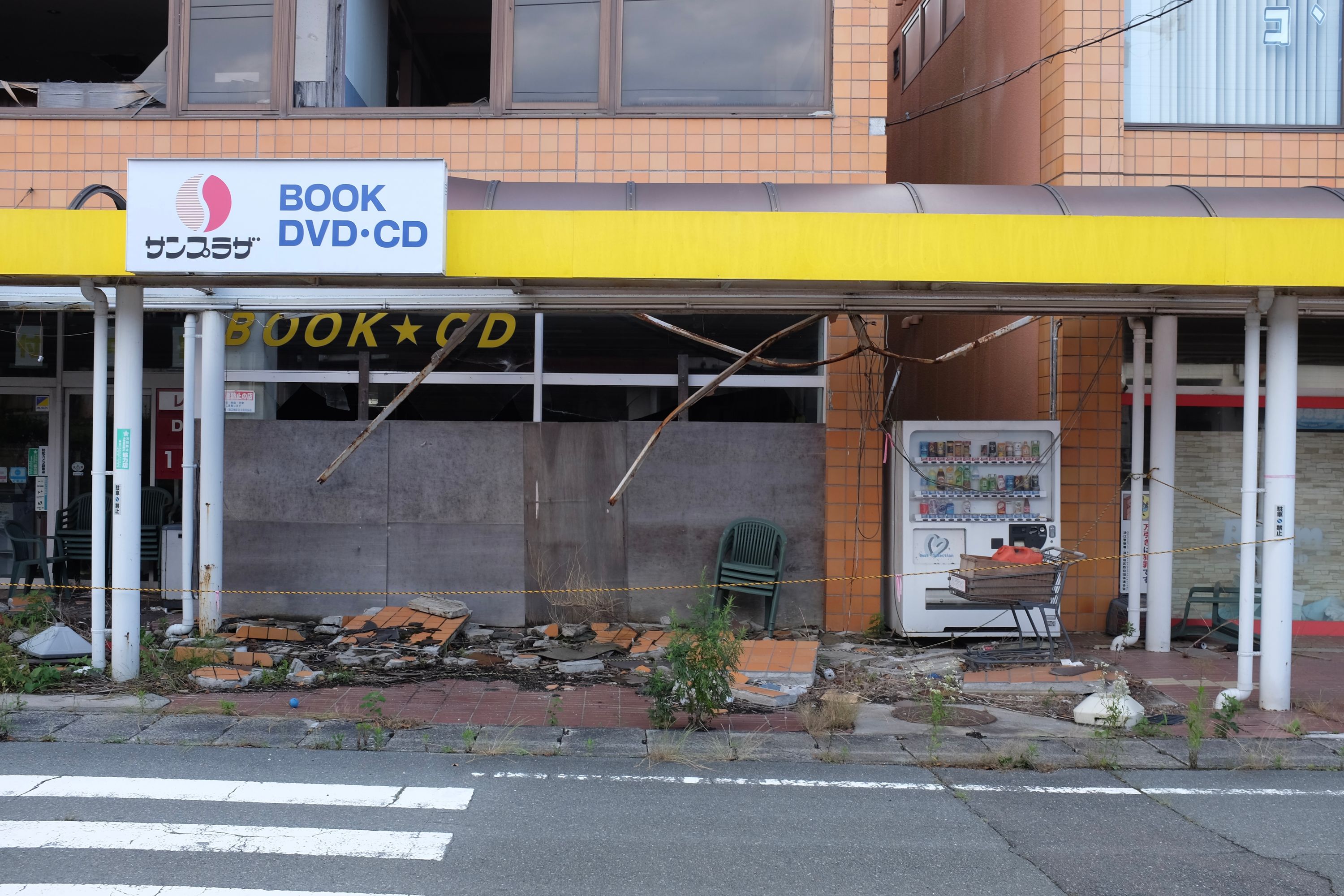
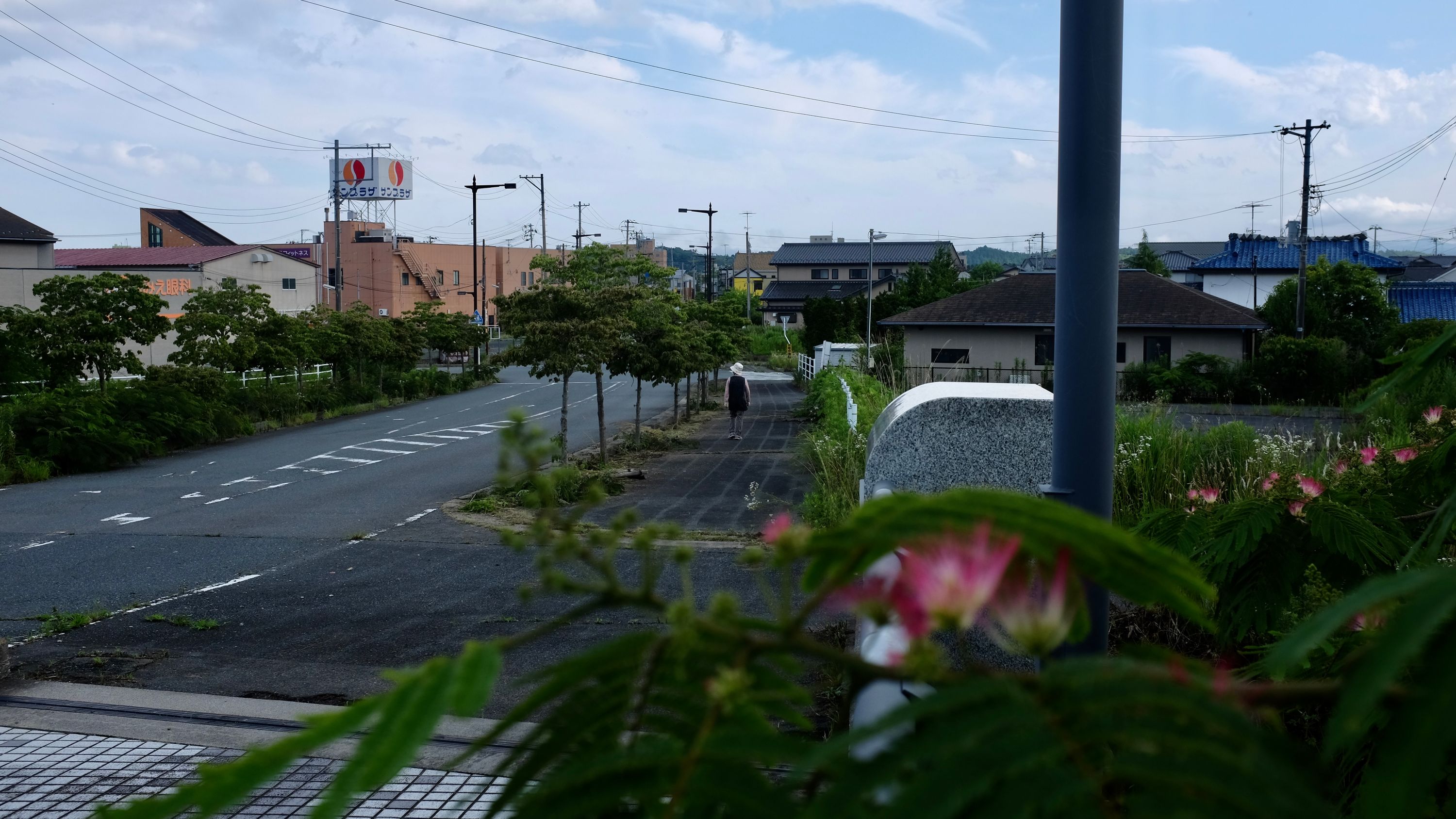
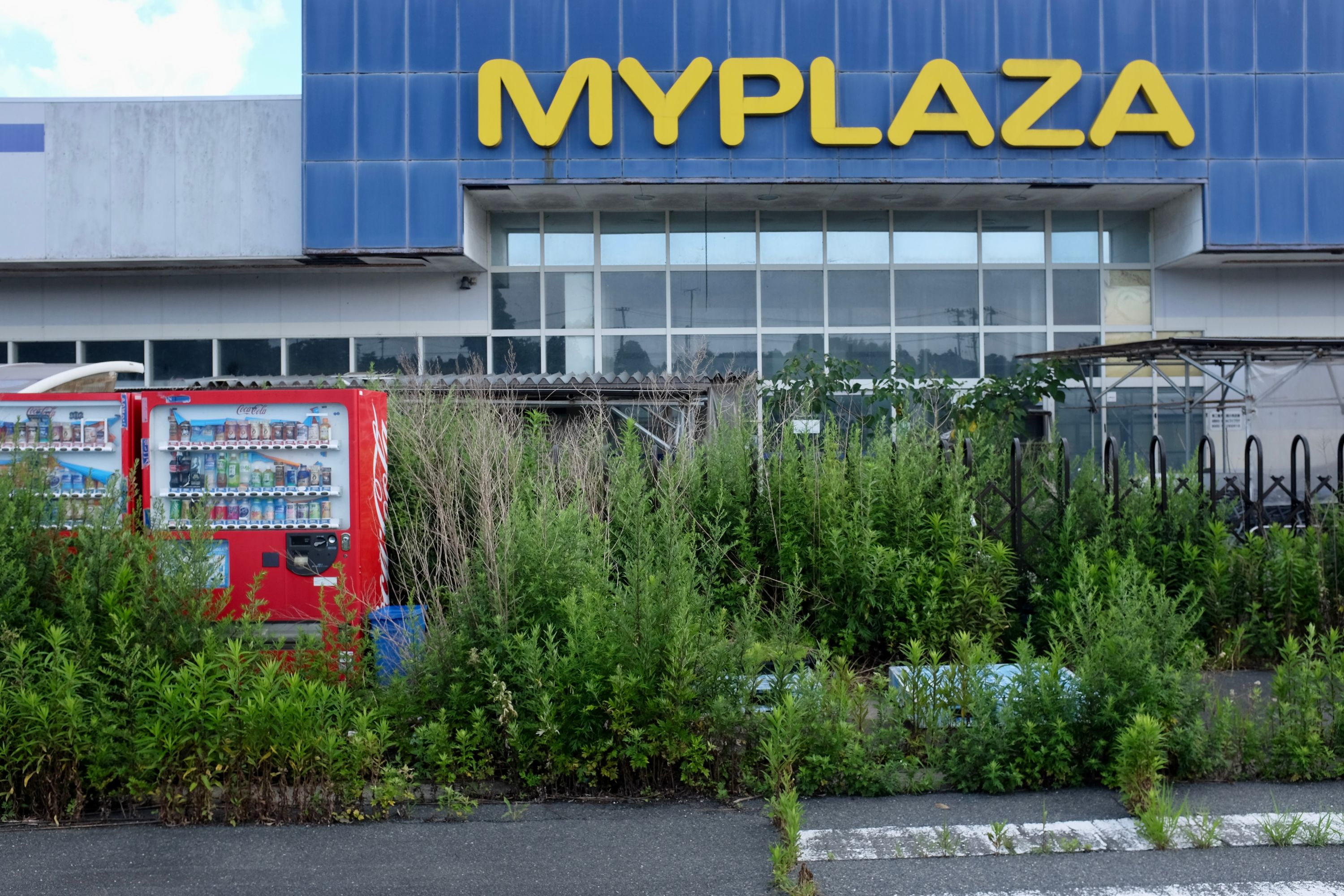
A wristwatch on the stairs, a vintage Toyota under six years of dust, the rusted cap of an unopened beer, a heating bill from February 2011, silk rabbits in their Sunday best: what we leave behind when our lives as we have known it ends between a Friday afternoon and a Saturday morning. I wandered the streets of Namie to the sound of cleanup crews hacking at the weeds, but who was kidding whom: four months after the evacuation order had been lifted, it was a dead town, every house rotting and ruined after six years of abandonment. An increase in cancer deaths was traded for the instant death of a town of 20,000. There was no evil here, only the banality of the ocean, the reactor, and the government, whose combined efforts have created a brutal work of art; less poetic, perhaps, than Ayano Tsukimi’s gentle elegy for Nagoro, but no less effective as a mirror, to a country which is losing a million people a year, to the ephemerality of our lives. I found it almost unbearable to look, but I didn’t look away, for this was Japan, and I had come to look at Japan. And I realized, when I walked out of Namie, that Japan was now also looking at me.
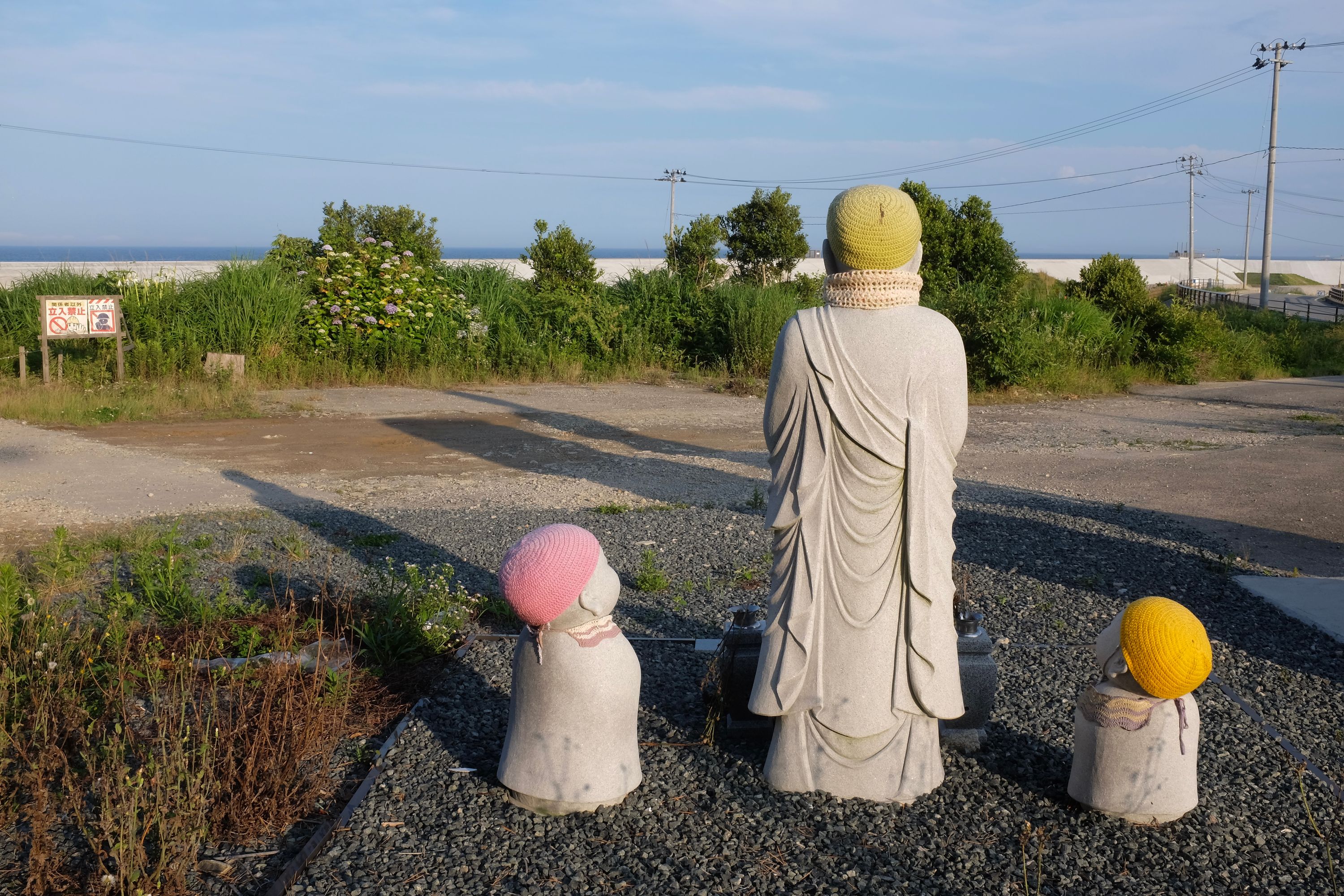
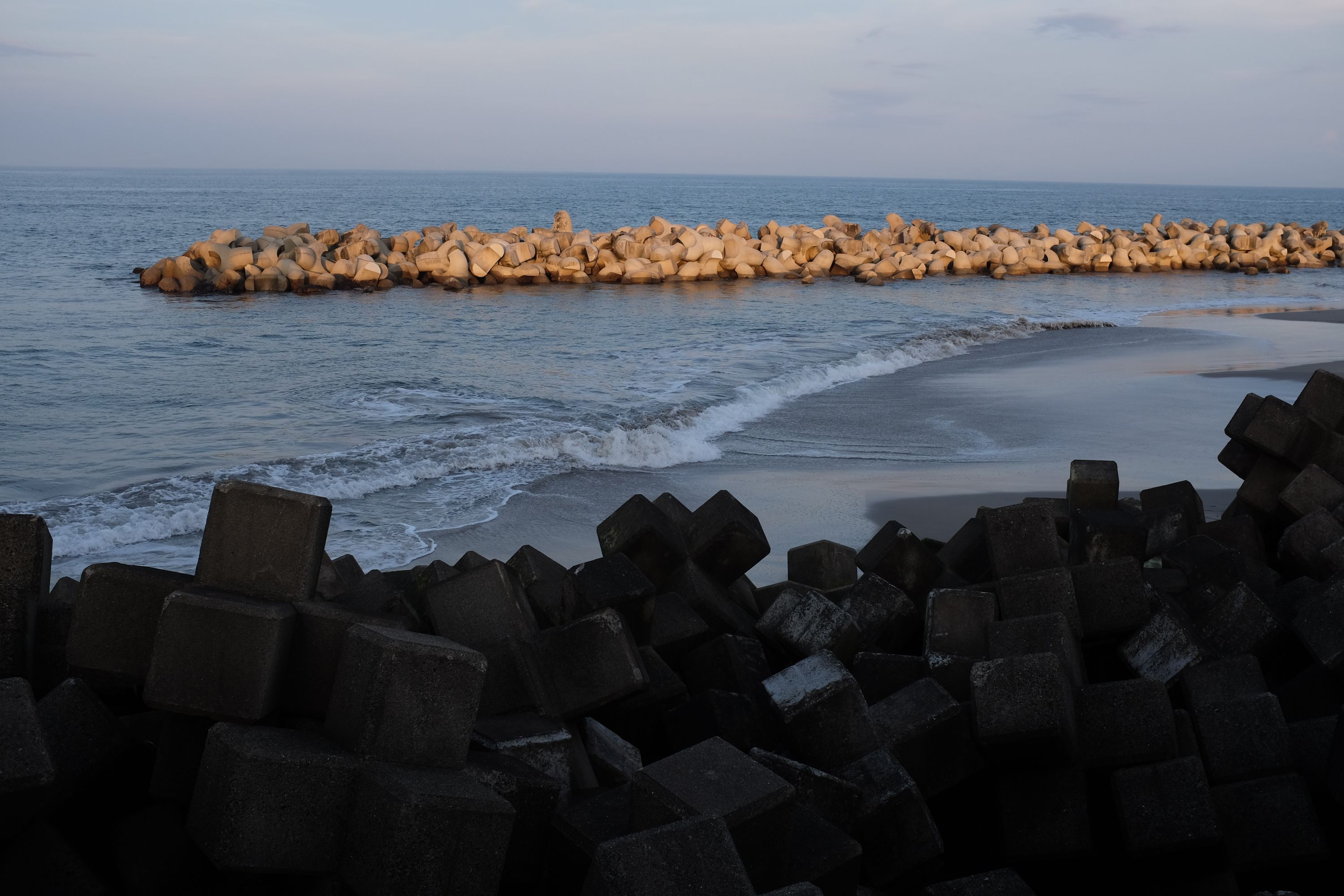
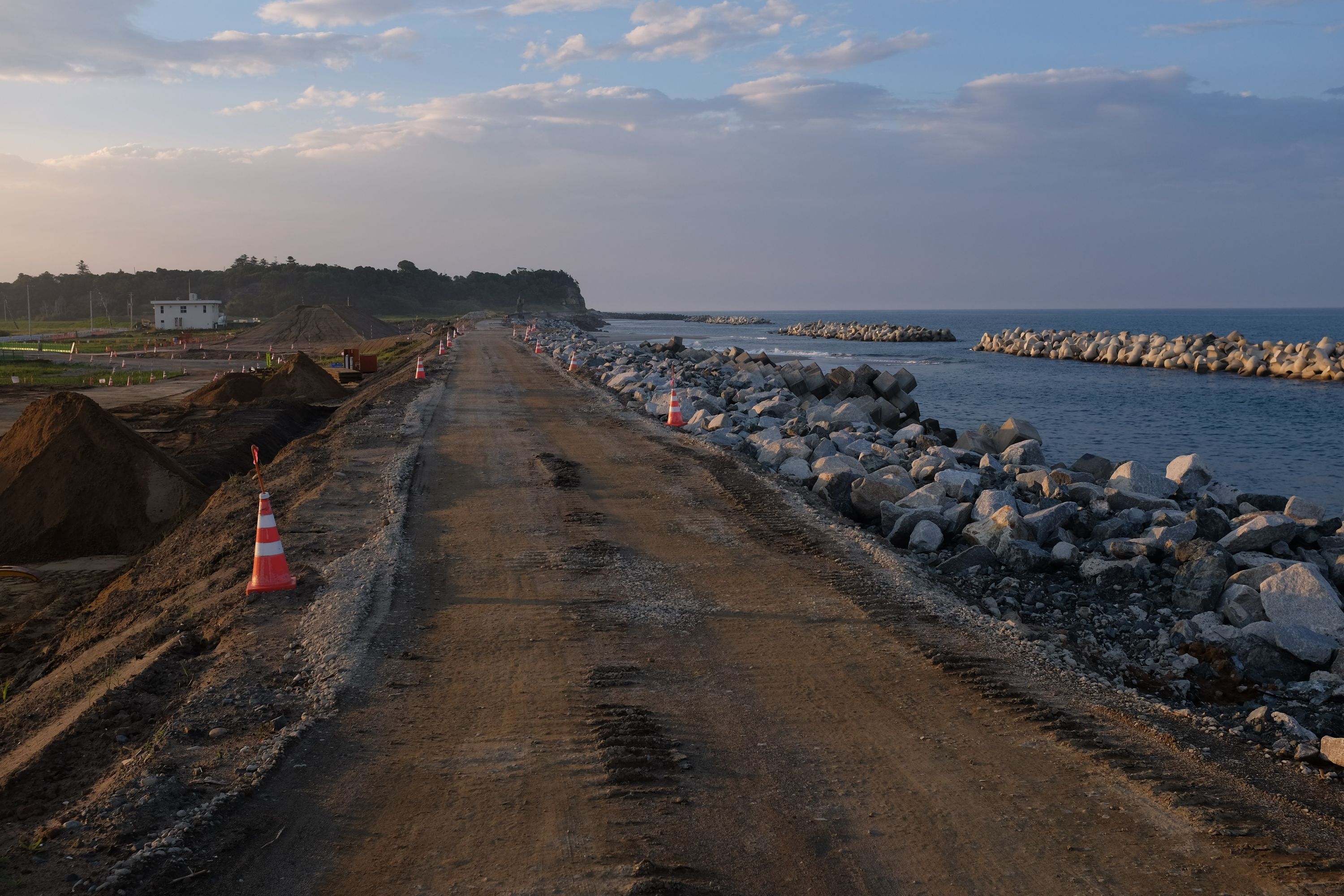
The Buddha and his disciples looked out over a serene ocean, its waves not monstrous walls but soft ripples, knit caps against the breeze, and I stood with them for a long time, looking towards California, where, at Big Sur, I spoke my first words in the summer of 1982. I wouldn’t see the Pacific again until January 2011, two months before it devoured the land on which we now stood. The wildflowers were back now, and so were the ducks, flying into a kaleidoscopic sunset, messengers between water, earth, and air. We didn’t need to look into the skies for alien worlds. I turned my back on the ocean, like the moai of Easter Island, and walked into the mountains of Tōhoku.
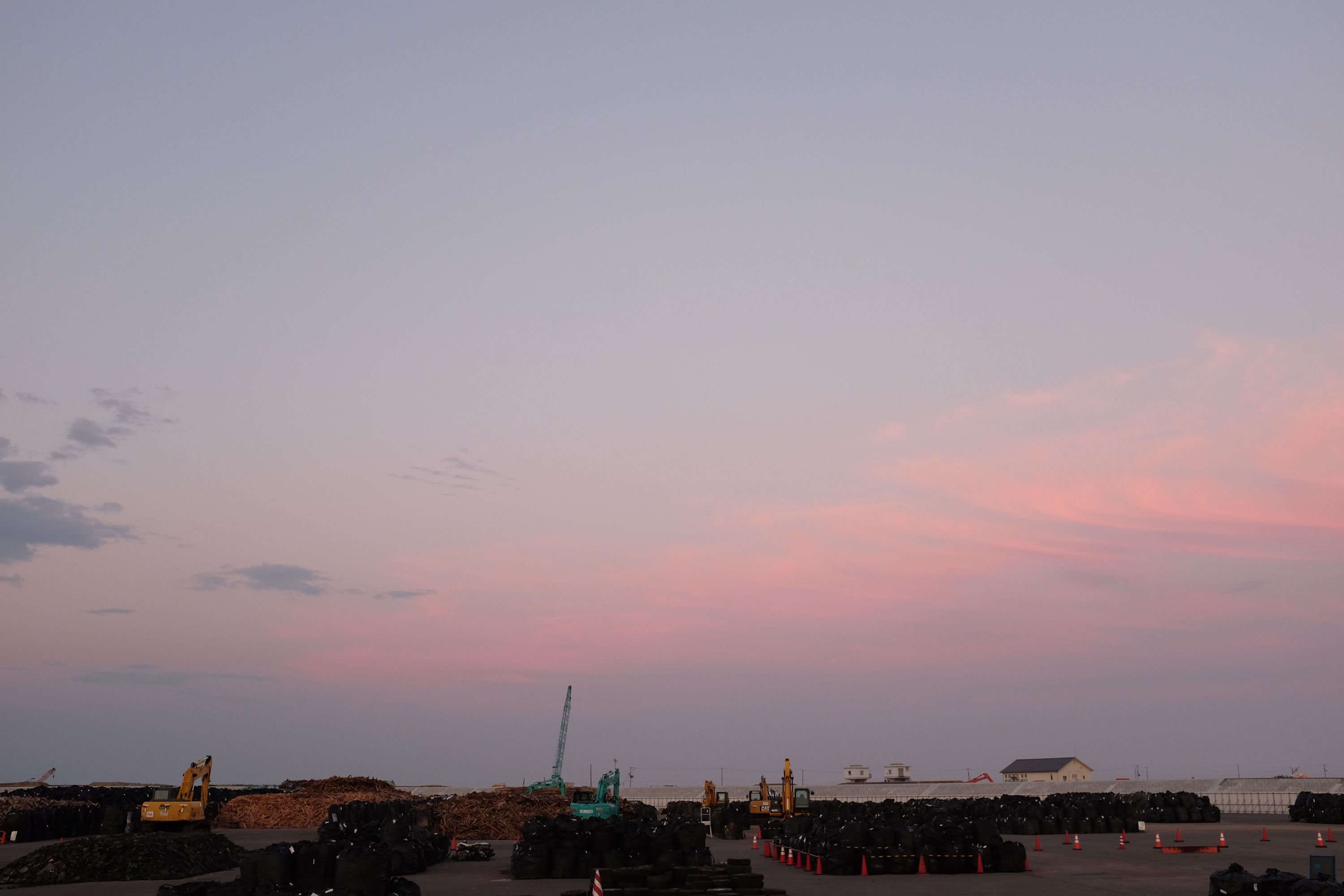
This was the sixth of seven days when I didn’t walk every step of the way. My walk this day crossed the exclusion zone around the Fukushima Daiichi Nuclear Power Plant. The area around the reactor was closed to pedestrian traffic but National Route 6, across the exclusion zone, was open to vehicles. I was picked up by two police officers at Tatsuta Station, driven across the exclusion zone, and dropped off on the other side. I walked on from a parking lot in Namie, a small town which had been reopened that spring. The yellow line on the map is the 26 kilometers I traveled in the police car.↩︎

